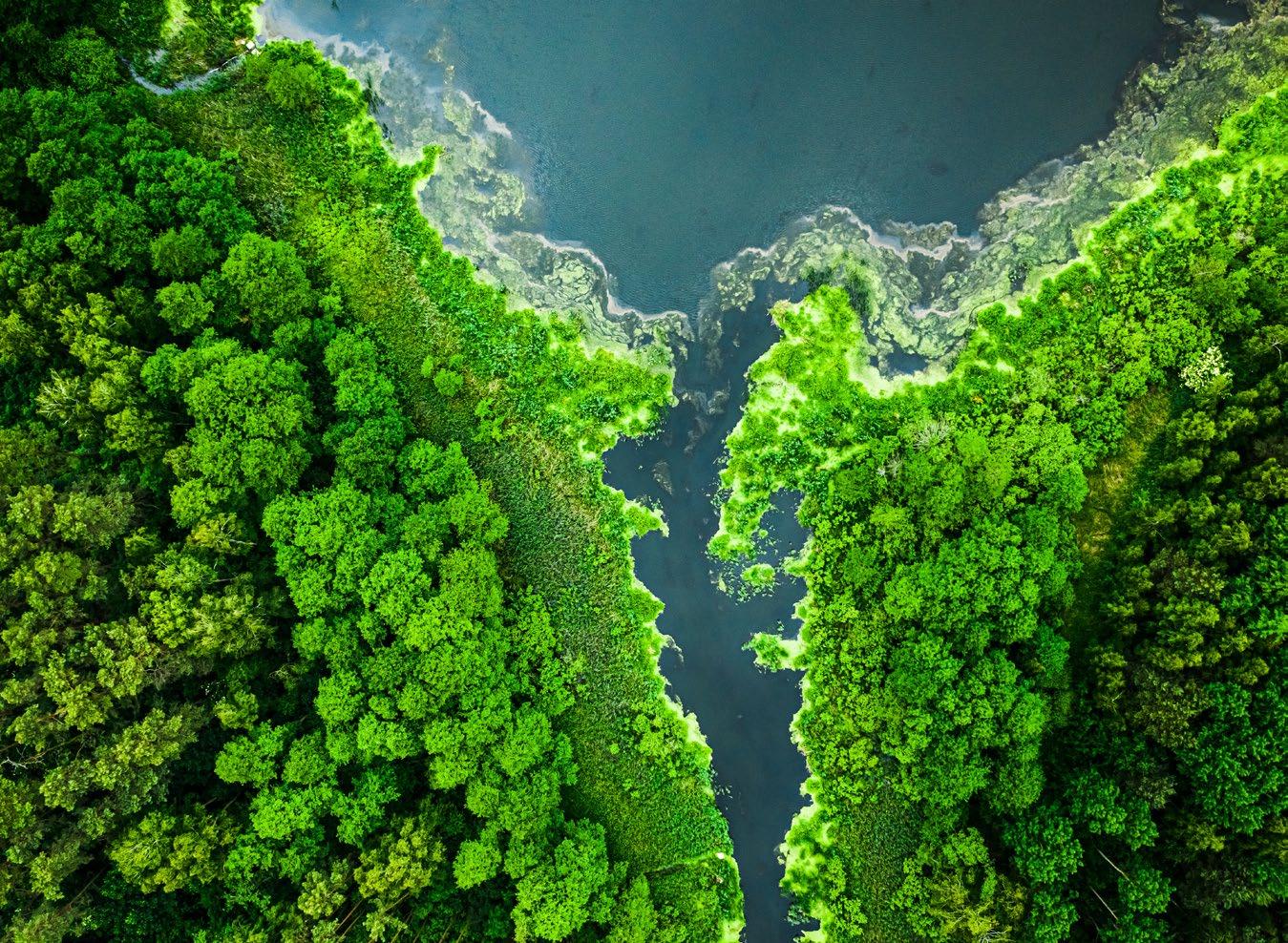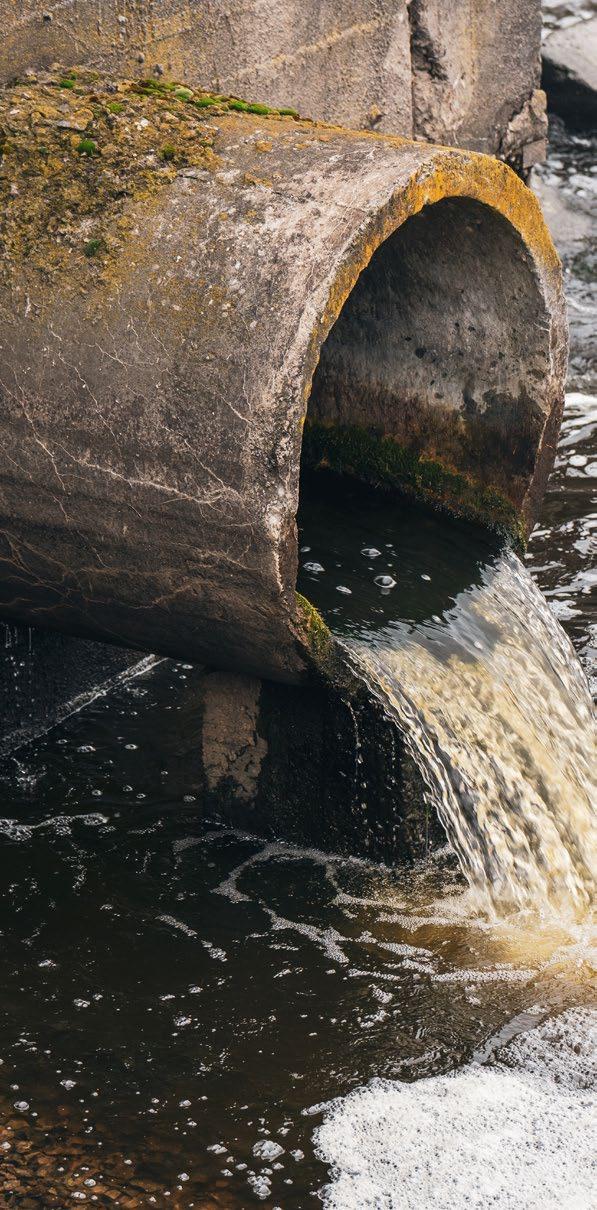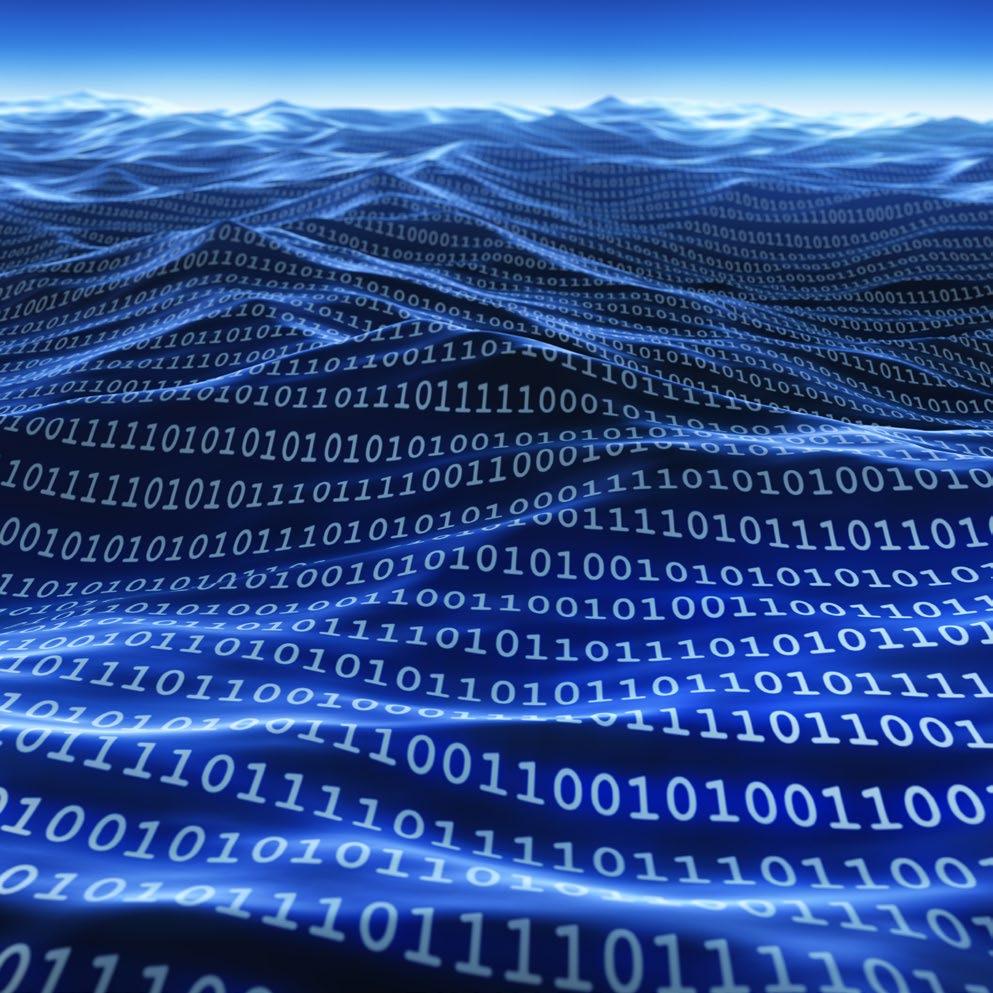






Water is a crucial factor in the discussion on climate change. It is imperative for us to work together and collaborate in order to achieve the Net Zero Proposed goals by 2050. We believe that the water sector holds key solutions to this challenge.

While more and more countries are pledging to achieve net zero emissions in the coming decades, the current government pledges fall short of what is needed to bring global carbon dioxide emissions to net zero by 2050. This puts us at a disadvantage in limiting global temperature rise to 1.5 °C.
So, how can we bridge this gap and support innovation? This magazine highlights water, climate technology, and sustainable energy solutions that are available, as well as insights from industry leaders. We showcase remarkable companies from around the world who are actively addressing issues like wildfires, emissions reduction, carbon capture, and the use of seawater for energy.
I am honoured to have The Water Council’s President & CEO, Dean Amhaus, on this editions cover. Dean shares his opinions on water innovation and climate change “I am most encouraged by the many technologies ramping up around micro water reuse systems.” Read this rest of the article on page 10
We are taking this conversation one step further, after the successful launch of H2O Global News in 2021. With a passion for providing news from people and companies that are changing the world in water and wastewater, we have set our eyes on the vast subject of our world and the changing climate. How to we adapt and where possible, where can we undo.
We are proud to announce the launch of climateglobalnews.com!
The website will be sharing news from agriculture, energy, transport, health & science, circular economy and technology industries.
Together, we can take meaningful action towards the well-being of our planet.
We sincerely appreciate your support and participation in this important journey.
Abby Davey Publisher and Co-FounderPublisher and Co-Founder
Abby Davey abby@h2oglobalnews.com
Creative Director and Co-Founder Louise Davey louise@h2oglobalnews.com
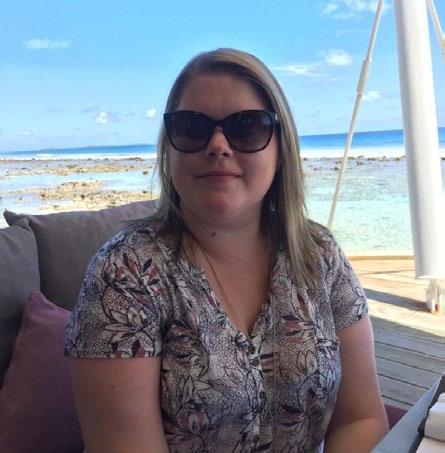
Editorial Team
Darby Bonner darby@h2oglobalnews.com
Martyn Shuttleworth martyn@h2oglobalnews.com
Natasha Posnett natasha@h2oglobalnews.com
Advertising +44 (0)7817 105 258 marketing@h2oglobalnews.com
FOLLOW H2O ON @h2oglobalnews

H2O Global News delivers news from around the world covering the Drinking/ Potable Water, Hydropower and Wastewater industries incorporating technology, companies, legislation, the environment and case studies. The H2O Global News Magazine is published four times a year (Spring, Summer, Autumn and Winter) by Blue Manta Media Limited, Buckinghamshire, England, UK.
H2O Global News t/a Blue Manta Media Limited has used utmost care to ensure and maintain the accuracy, completeness and currency of information published on this site. We, however, take no responsibility for any errors or omission, though if notified of any we will endeavour to rectify such.
CGN is an innovative platform that bridges the gap between industry, research and policy in a modern climate conversation. We enable our users to engage in meaningful conversations about the future of our planet and strive to create an open space where collaborators from all sectors can work together for sustainable progress.

According to the consultants, around $5 trillion in investment might be necessary to achieve aviation’s ambitious aim of carbon neutrality by 2050.
The rest of us live in 2023.
Our Fund III is backing early-stage companies with technology innovations that help industry and society adapt to water-risks in our new climate reality.
Learn more about our Fund III: mazarineventures.com/fund-3
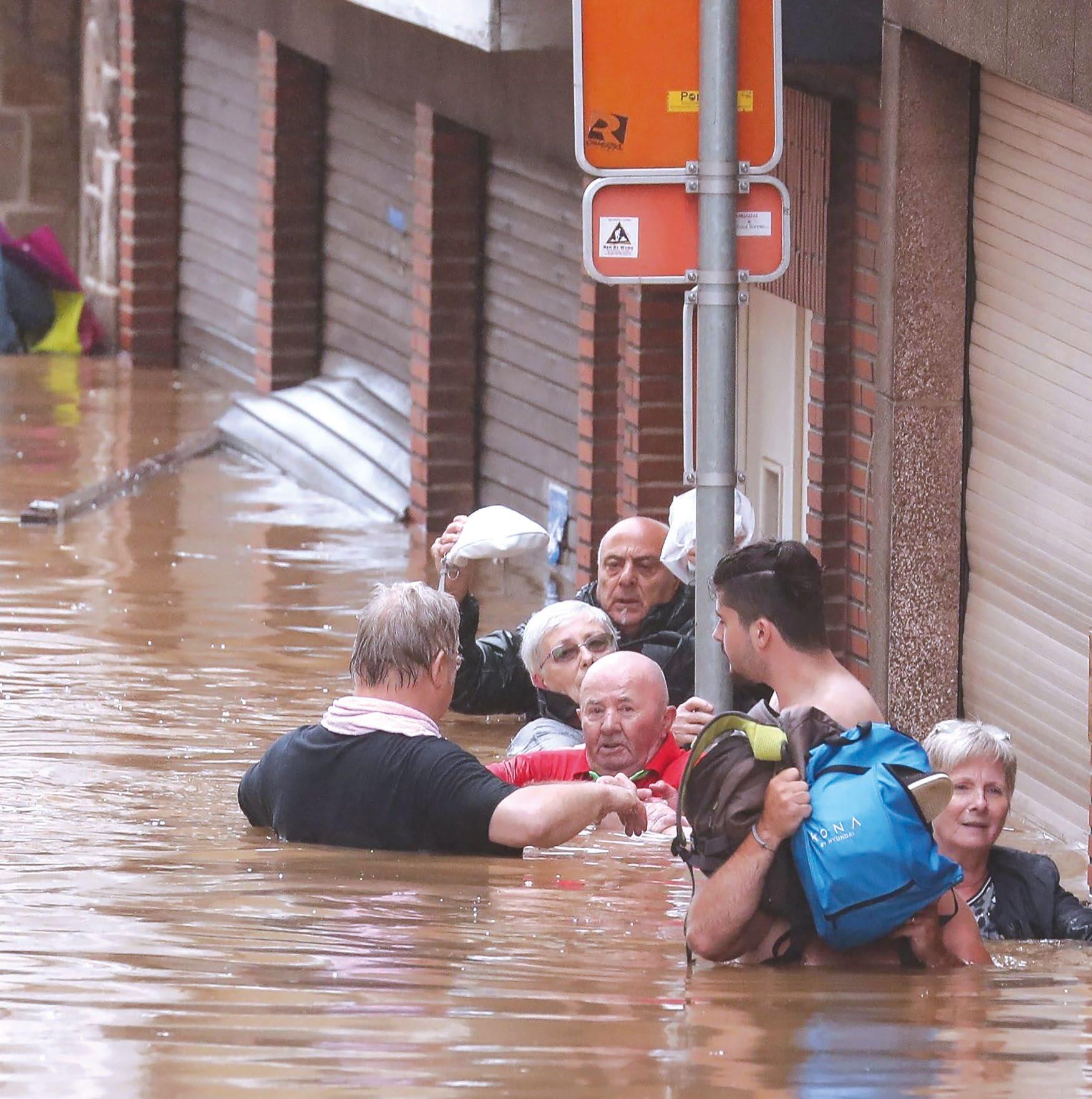










In a world where climate change is becoming an increasingly urgent issue, the need for sustainable solutions has never been more critical. With the push towards a net-zero carbon emissions target by 2050 this deadline is starting to ‘creep up’, and therefore we need to explore more innovative ways to address the challenges posed by water, climate, and energy.
The year 2050 may sound far away, and you may be thinking, why act right now… Well, one of the key reasons why this matters is to address water scarcity issues. As climate change worsens, many regions are experiencing water shortages due to changing weather patterns and increased demand. Implementing water/climate tech solutions such as desalination plants, rainwater harvesting systems, and efficient water management practices can help alleviate these challenges and ensure even the remotest of areas have access to clean water.
But that’s not all. Rising temperatures and extreme weather events are becoming more frequent, leading to droughts, floods, and other natural disasters, therefore we must also mitigate the impacts of climate change. By implementing innovative technologies like flood control systems, early warning systems, and climate modelling tools, we can better prepare and respond to these events, minimising their devastating effects on both our communities and ecosystems.


Water/climate tech and energy solutions are integral to achieving net-zero emissions. By investing in these sectors, we can significantly reduce our carbon footprint and transition to a more sustainable future.
In the energy sector, the widespread adoption of renewable energy sources is crucial. Solar, wind, and hydropower, in particular, offer clean and abundant sources of energy that can replace fossil fuels. With advancements in technology and falling costs, renewable energy has become increasingly competitive and accessible. By harnessing the power of the sun and wind, we can generate electricity without contributing to greenhouse gas emissions.
BonnerAdvanced water treatment technologies can also help reduce energy consumption in water treatment processes, leading to lower carbon emissions. Smart irrigation systems can optimise water usage in agriculture industries, minimising water waste and energy consumption. Additionally, the use of water as a coolant in energy generation processes can be optimised to reduce water consumption and associated carbon emissions.
While the water/climate tech and energy sectors offer immense potential for a sustainable future, they also face several challenges, one being the initial investment required for implementing these technologies. While the long-term benefits are significant, the upfront costs can put off many businesses and governments. However, with supportive policies and financing options, the transition to water/climate tech and renewable energy can become more feasible.
Another challenge is the integration of these technologies into existing infrastructure. As such, retrofitting buildings, upgrading power grids, and implementing water management systems require careful planning and coordination. Yet, we must harness these challenges into opportunities. Investing in water/climate tech and energy offers numerous benefits for individuals, businesses, and governments alike. For example, developing and implementing new technologies and infrastructure can lead to positive economic growth and employment opportunities in the water/climate tech and energy sectors; as the demand for renewable energy technologies and services increases, new opportunities for employment and entrepreneurship arise.
From an environmental perspective, these investments contribute to reducing greenhouse gas emissions and preserving natural resources. If we take transitioning to renewable energy sources and implementing sustainable water management practices more seriously, we can protect ecosystems and mitigate the impacts of climate change.

For us to succeed in meeting net zero by 2050, collaboration and partnerships are key. Governments, businesses, educational bodies, and non-profit organisations must work together to develop and implement sustainable solutions.
It is such collaborations that allow for digital transformation in the water sector, leading to innovative solutions such as artificial intelligence (AI) water systems, which play a crucial role in addressing challenges in the water sector by providing real-time data on water quality, identifying potential risks, and enabling effective strategies.
The need for water/climate tech and energy solutions has never been more critical. As we strive to achieve a net-zero carbon emissions target by 2050, investing in innovative technologies and sustainable practices is critical.
By investing in water/climate tech and energy, we not only can address pressing environmental challenges but we can also create new opportunities for economic growth and job creation. It is time to prioritise these sustainable solutions and pave the way for a greener, cleaner future.
 Written By | MARTYN SHUTTLEWORTH
Written By | MARTYN SHUTTLEWORTH

With fires raging around the world and stories of melting icecaps, famines, and other disasters, climate change is portrayed as the biggest threat to humanity. Countless column inches tell us how humanity is doomed unless we change our ways immediately. There is a lot of truth in this and it is certainly a huge threat to our way of life and future. Humanity does need to take action to reduce emissions and slow down the process.
Yet, despite all of these stories, I still have some optimism and sense a slow but steady change, especially within the water industry. When I talk to start-ups with great ideas, new technologies, and passion for the environment, I see people trying to make a real difference. Climate change is certainly a serious issue that we need to deal with, but are journalists focusing only on the dark warnings? Are they missing some of the actions people around the world are taking to tackle the problem?
While we undoubtedly need journalists who raise a red flag and point out the problems and need for change, it is just as important to also highlight the solutions. Without this, the media risks contributing to a societal malaise and becoming counterproductive.
One concern is that constantly bombarding people with negativity means they become immune or simply shrug their shoulders. If they feel that nothing they do will make any difference, why bother?
Perhaps there is a fine balance where it is just as important to show people the new innovations, the inspirational people within the water industry, and fresh start ups who can make a difference. Supporting and highlighting these new technologies, and bringing them into the public awareness, can help them unlock funding and open fresh markets.
The public can lobby decision makers to adopt new approaches but, to do that, they have to be aware that these solutions actually exist and are already underway. Knowledge empowers, filling people with optimism and belief that they can actually make a change.
Another issue is that some politicians and other influential people hide behind climate change. All too often, they use it as an excuse for doing nothing while cutting funding needed to adapt and prepare. They still allow building developments on floodplains, refuse to spend money on wastewater
treatment, and cut budgets to environmental agencies.
While movements encouraging politicians to cut emissions are always welcome, we need to make sure that governments are also investing in mitigation. Preparing for the future needs actions such as encouraging salt marshes to tackle flooding, forest management to prevent large wildfires, and the countless other solutions that already exist but are often ignored.
Tackling climate change isn’t just about reducing greenhouse gas emissions and trading carbon credits: it needs a broader approach that lessens some of the impacts. Fortunately, some of the innovations in the water industry offer great promise and need wider publicity.
Rather than just seeing the problems, we can focus on solutions and new technologies in the water industry that can help turn things around. This month, I have been fortunate enough to talk to people and companies with great ideas for addressing climate change and helping us cope with the effects.
Mocean Energy, a Scottish company, is developing wave energy technology to harness the power of the waves, especially for remote communities. Alongside a great explanation of how wave energy works, they give some insights into the future of the industry and the potential it has to provide clean energy.
Meter.me developed a technology that allows businesses and residences in rural areas to monitor their water systems and use water more efficiently. Importantly, drawing on personal experience with wildfires, the inventors of the system ensure that communities and homeowners have water stored and available when threatened by fires.
Finally, Ecolab shows how reducing water use in the hospitality industry can also play a meaningful role in reducing emissions. Saving water and using it more wisely also leads to reductions in energy use and a smaller footprint. In many areas where water shortages are becoming more common because of climate change, their solutions preserve precious resources.
The opportunity to write about climate change is also an opportunity to spread some positive waves and highlight people who are setting out to solve problems by developing great new technologies, taking risks, and following visions. Of course, like other sectors, the water industry can do more – we all know that. But it is sometimes good to look at the progress that gives us something to build on and explore new ideas.
Should journalists be more positive about climate change? It is very important to keep reporting on the problems, but it is just as important to report the solutions within the water industry and create hope for the future.
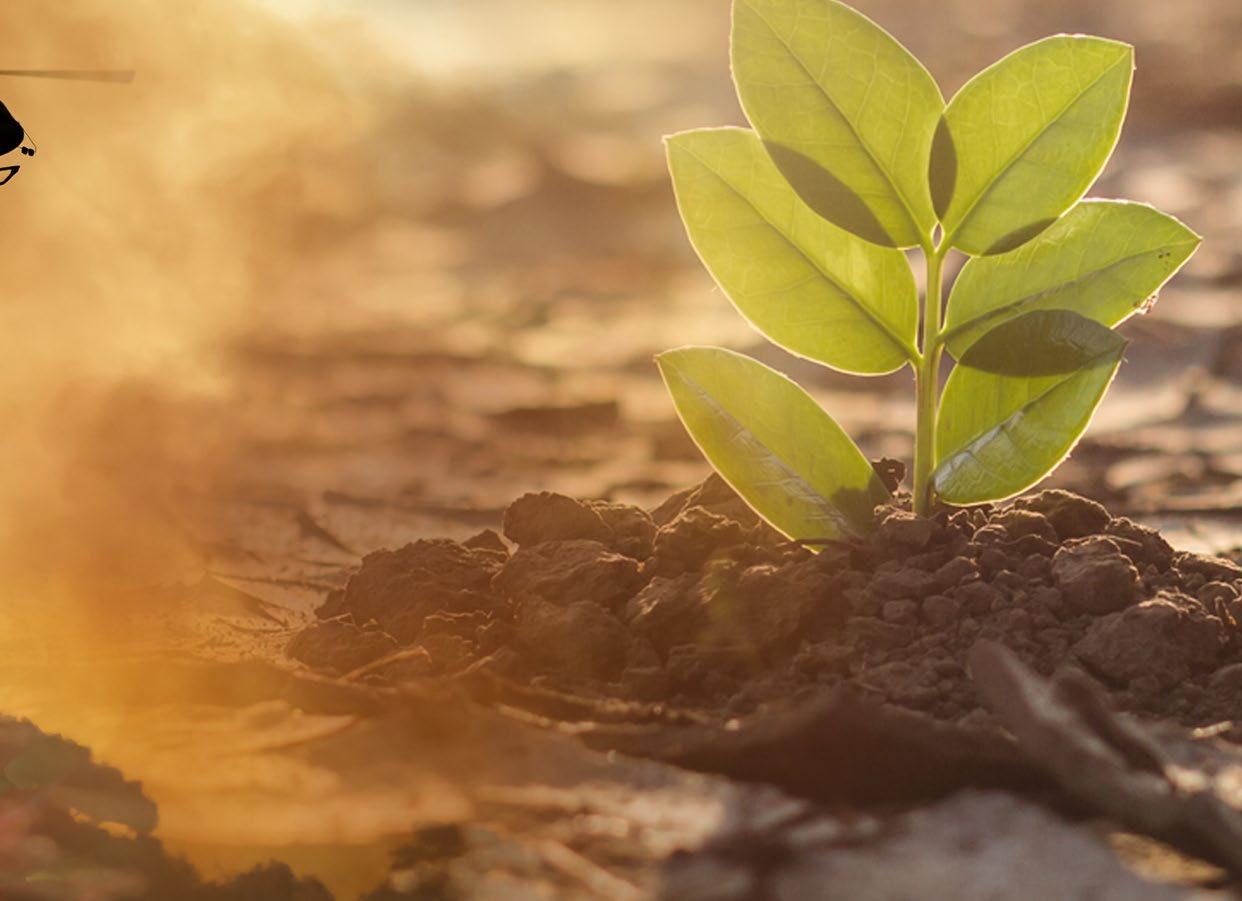
There are many reasons to love the ocean: its tropical waters, brightly coloured corals, barrelling waves and towering icebergs. But, most people don’t appreciate its vital role in our fight against climate change. Blue carbon refers to carbon that is captured and stored by marine ecosystems, and it truly is an unsung hero of our oceans! There is a growing interest in blue carbon as a nature-based solution to help curb climate change. The magnitude of its benefits is still being researched, but scientists have begun harnessing its power and using technology to optimise the outcomes.
The most important ecosystems for carbon uptake in our oceans are seagrass meadows, salt marshes and mangrove forests. They absorb carbon from the air and water for photosynthesis and store it in their leaves, branches and roots, creating very efficient ‘carbon sinks’. These marine ecosystems make up less than 2% of the ocean floor but account for 50% of carbon storage in our oceans. When combined, seagrass, salt marshes and mangroves cover almost 50 million hectares and are found along the coastlines of every continent except Antarctica.
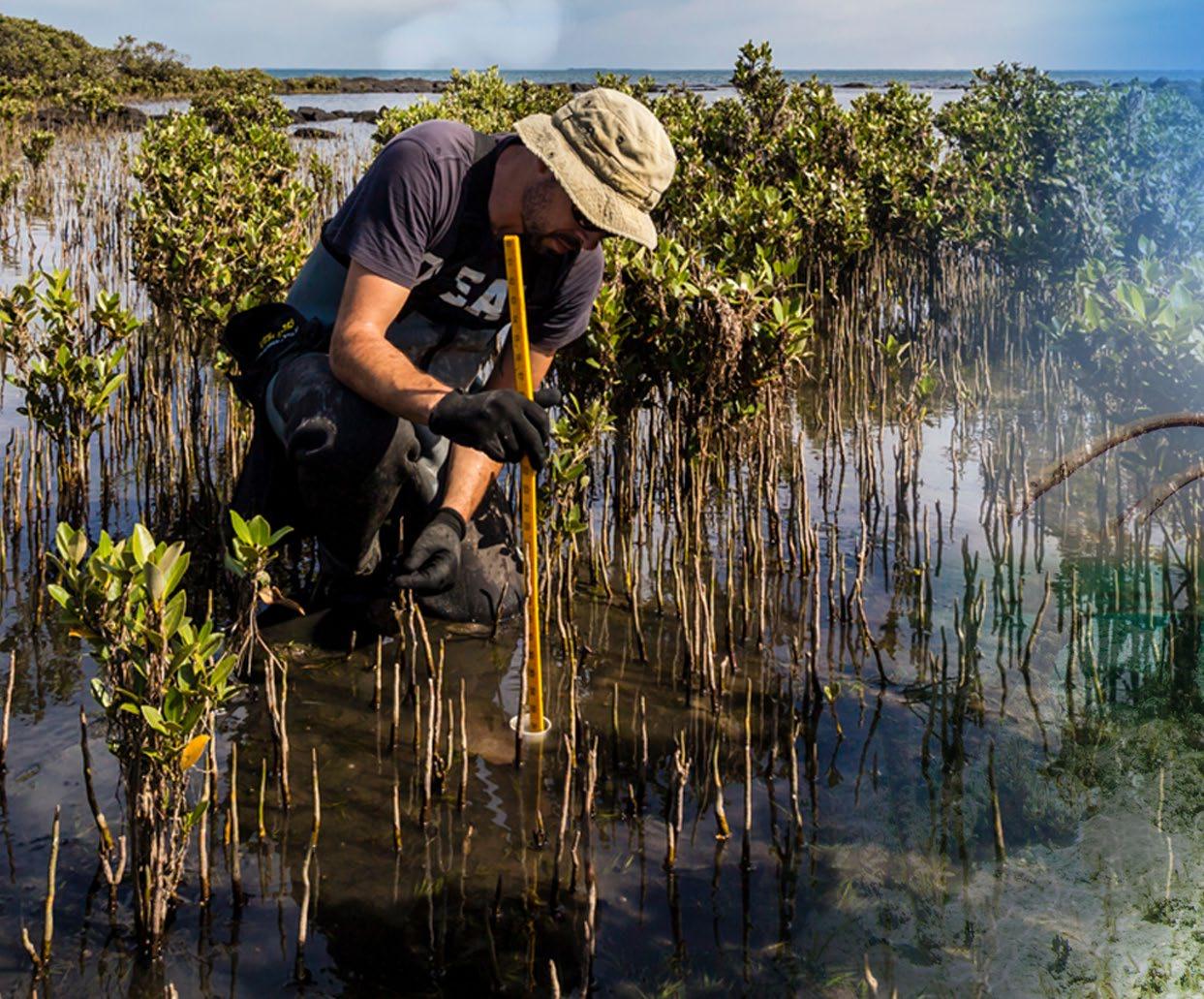
Blue carbon ecosystems help to mitigate climate change by sequestering and storing carbon dioxide. The greenhouse gas is pulled out of the atmosphere via photosynthesis, reducing the warming effect it has on Earth.
Amazingly, these ecosystems achieve carbon removal 40 times faster than rainforests and store more per unit area than terrestrial forests.
Natasha Posnett Staff Writer at H2O Global News
Companies have realised the significance of blue carbon and are doing important work to bring awareness to its benefits and increase its effectiveness with the use of technology.
It is exciting to see how technology is used to help blue carbon ecosystems thrive under everchallenging conditions and the growing momentum behind sustainable management, protection and restoration of these extraordinary ecosystems. Aerial imaging, environmental DNA and carbon coring are just a few of the techniques currently used to gain a deeper understanding and implement the best management and restoration actions.
Scientists at Beneath the Waves devised an innovative and effective way of measuring seagrass meadows in the Bahamas. They attached cameras to Tiger sharks! Tiger sharks spend their days swimming in shallow coastal waters searching for their next meal, and their movements helped to measure seagrass meadows, including what is now understood to be the largest in the world at approximately 90,000 sq. km in size.
The Nature Conservancy and Planet partnered to create The Blue Carbon Explorer. This digital tool combines high-resolution satellite imagery and drone footage to map mangroves and seagrass. It aims to assess the ecosystem’s health and identify areas that require restoration. It will also provide the necessary data for governments and coastal managers to make informed decisions regarding protecting and restoring coastal ecosystems.

The National Oceanography Centre is undertaking carbon coring and analysis to examine seagrass beds across the UK to determine the rate at which they capture and store carbon and contribute to supporting fisheries and coastal protection. One site they are focusing on, Porthdinllean Bay in Wales, is a Special Area of Conservation (SAC) with large areas of seagrass.
The Blue Carbon Lab is another organisation using coring to measure carbon stocks and sequestration rates. They pair this with desktop methods such as habitat mapping and spatial modelling to obtain a detailed overall picture of the habitats.
Environmental DNA originates from cellular material shed by organisms. It can be used to detect endangered species, study the impacts of climate change and assess the overall health of an ecosystem. Beneath the Waves is one of the organisations using this method to gain insightful data on their project areas.
There is no single solution to addressing climate change, but blue carbon ecosystems can play a huge role in tackling our climate crisis. They are not only diverse habitats for beautiful and important species, but they help to mitigate the effects of climate change and provide essential ecosystem services. Technology will be a great ally in gaining the most from blue carbon ecosystems. Nature-based solutions and modern technology make the perfect duo!
We spoke with the President & CEO of The Water Council about the importance of the water sector innovation to support climate change affects on the world.

What are some of the most prevalent water-related hazards and how do they impact communities in your region?
Understandably, a great deal of attention is given to water scarcity issues, but water quality is just as important. Water that may be available but of too poor quality to be used is no different from scarcity in terms of impact. Quality can be associated with numerous issues from PFAS to invasive species, but for our region and in many places, phosphorous overload is a growing concern. This can result in the complete shutdown of water systems for a community, with devastating impacts not just on households but also on the local economy, as it can cause businesses to be temporarily sidelined or worse, cease operations.
How can the management of water resources mitigate the effects of climate change?

We are all responsible for water resources, but businesses don’t always recognise their role as water is seen as relatively accessible and inexpensive. Since climate change will mostly
be felt through water, every business, regardless of industry, must up their game to mitigate water risks in terms of quality and quantity. Having a strong and verifiable water stewardship plan will improve economic performance and, most importantly, create a positive impact on the overall management of water resources in the watersheds where businesses operate.
What are the innovative water solutions that can help build resilience and adaptation in the face of climate change?
In the face of the water challenges impacting our region and the world, what is most encouraging to me is the remarkable level of human innovation in a vast range of areas, from new membranes to digital information. I am most encouraged by the many technologies ramping up around micro water reuse systems. From the beginning of time, water has been used and cleaned by nature. We now have the technologies to clean it faster targeted to specific locations. These technologies can be scaled down to relatively small, portable systems that can be linked together in the form of a microgrid. One hurdle that still exits and can be overcome is our own citizens’ acceptance of where the water might come from when they open their tap.
Learn more: thewatercouncil.com
With increasing concerns about the quality of bulk reagents such as bulk ferric chemicals that are widely used in the water treatment industry, we spoke to Rick Bacon, CEO of Aqua Metrology Systems (AMS), who explains why an onsite generated ferrous/ferric reagent is poised to replace the use of these hazardous products since it does not compromise the quality of drinking water, harm the environment and it can be produced using renewable energy sources and stored for later use when these are unavailable.

Whereas bulk ferric chemicals often have significant levels of co-contaminants (e.g. manganese and other trace metals) that compromise treated water quality and the environment, the high purity of the electrode precursor material used in SafeGuard™ H2O has minimal and predictable effects (Table 1) and the produced reagent concentration is tightly controlled.
Learn more: aquametrologysystems.com

While ferric chemicals are a proven low-cost treatment option to remove contaminants from drinking water supplies, there is a growing awareness of the lack of adequate quality controls and certifications of these chemicals. As a result, utilities are seeking alternative, more carbon neutral and environmentally friendly treatment methods. AMS’ SafeGuard™ H2O system is a sustainable alternative that responds to that need.
AMS Advances the Generation of Water Treatment Chemicals On-Site and On-Demand

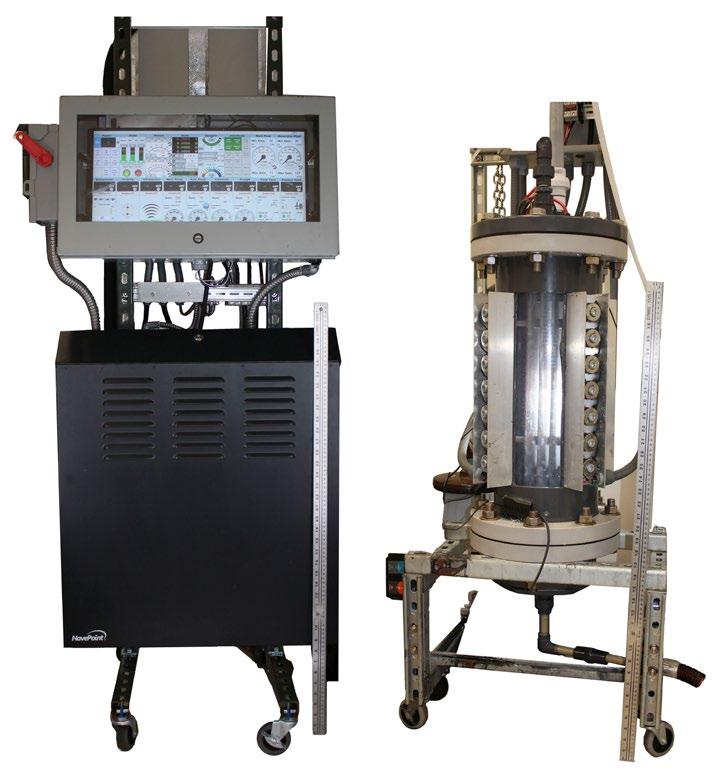
SafeGuard™ H2O is a fully automated advanced water treatment system that generates a ferrous/ ferric reagent on-site and on-demand, replacing the use of toxic and hazardous bulk ferric in traditional reduction-coagulation-filtration processes. The technology works to remove a wide range inorganic, organic and trace metal contaminants by using a non-toxic, certified reagent precursor material (low carbon steel) and an in-situ electrolytic generator to create a non-hazardous reagent.
Table 1: Laboratory Analysis Results of 39% Bulk Ferric Chloride Reagent & Electrogenerated Ferrous Reagent
 Written By | MARTYN SHUTTLEWORTH
Written By | MARTYN SHUTTLEWORTH
As someone who lives in a wildfire zone and understands the devastation, any system that makes water in rural areas available for firefighting is welcome. When strong winds feed the flames and you desperately try to stop the fire spreading, every single moment matters.
For this reason, I find the new meter.me technology very interesting. This smart-phone, cloud-based technology helps rural communities track water reserves in wells, tanks, and ponds. Importantly, firefighters can view where much-needed water is available in real-time
For Ofer Tenenbaum, co-founder of meter.me, the need for the system became real during his experiences with the 2017 wildfires that devastated huge tracts of the beautiful Californian forests. Ofer related his encounter:
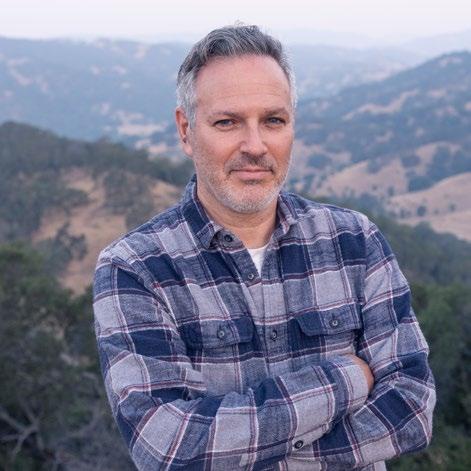
“On October 10th, 2017, at 10:28 pm, the Atlas Fire was half a mile from the turn to our road. In two nights, it jumped Monticello Rd and raged into Wildhorse Valley and onto Twin Sister’s ridgeline, where it blew up a 19,000-square-foot concrete and glass home.”
Ofer Tenenbaum, Co-founder of meter.mePeople who haven’t experienced wildfires don’t always realise how quickly they move. It is easy to become trapped when you are disorientated and need to make split second decisions with far-reaching consequences. Do you flee, stand and fight, or wait for support? During a fire, electricity, communications, and water supplies can fail, leaving you isolated in the choking smoke. As Ofer noted:
“At a mile every two hours, I had about an hour left before the point of no return because the road would be blocked. If I stayed, I would need to defend my home with whatever water I had in the tank. I could not count on electricity running the pump. Luckily, I had a 2500-gallon tank at my disposal, or so I thought...”
At times like this, you quickly realise the consequences of your decision in the starkest way.
“Turns out we had a major leak. Discovering your water tank is empty when a wildfire is in the footsteps of your property is devastating. I told myself that if I made it through this fire, I would not get caught in this situation again.”
Fortunately, the fire passed and the next day brought relief. “Finally, by 4 am, it was clear that the wind had stopped and so did the fire’s progress. With calm winds, the helicopters flew in early and picked up water from the nearby reservoir to support the firefighters.”
Keen to support others in the same position, the meter.me team worked on resurrecting an old idea: “The idea of modernizing rural water systems was not new. We attempted to do precisely that twenty years back, but without cloud computing, iPhone, and IoT technology, the project was short-lived.”
In the aftermath, meter.me emerged, as an affordable rural water management system with SCADA functionality. It uses LoRa technology, which works even when traditional cell and internet services are lost during a fire. Using an intuitive interface, “users can see and manage every aspect of their water supply, from the groundwater source to the storage in tanks and ponds.”
When moving into fire season, preparation is key. Long before a fire arrives, it is important to clear combustible material and ensure that water storage systems are full and without leaks. Knowing he could not rely on help, Ofer now faced future fire seasons with a fully-automated home water system:

“By the 2020 fires, I had complete visibility of our entire water supply, and anticipating more fires to come, we can now turn remote valves on/off, divert water, run pumps, and see water levels.”
Real time water monitoring and management, leak notification via smartphone, and sharing information with fire agencies can be crucial. Using meter.me’s integration with Tablet Command, firefighters in the Lake, Napa and Sonoma regions can view real-time water levels in nearby tanks and make quick, coordinated decisions. As I know from experience, having water nearby is a major factor in whether your home survives.
Looking at the wider picture, in this part of Greece during the 2007 wildfires, we almost ran out of water as reservoirs and aquifers dried up. Preserving water so that communities can tackle fires is vital as water shortages spread. Ofer noted:
“The average rural water system in the American West transports between 10,000 and 100,000 gallons each month. Those systems can lose more water in one leak than they transport in an entire year.”
With climate change increasing the frequency and intensity of wildfires, and depleting groundwater resources threatening 40% of the world’s rural inhabitants, the company’s philosophy is ‘Water Systems for a Changing Planet.’ Ofer notes his team is “out to create the first ‘ERP’ like platform for water management in the countryside.”
Meter.me goes beyond traditional metering and the team is overhauling archaic analogue rural water supply chains without relying on Wi-Fi or cell coverage. It covers groundwater extraction, detects water loss through machine learning, and maps aquifers as well as sharing important water resource information with fire agencies.
meter.me is a trademark of Lamarr, Inc.

 Written By | MARTYN SHUTTLEWORTH
Written By | MARTYN SHUTTLEWORTH
As the world tries to reduce carbon emissions and conserve water, the hospitality industry is exploring how it can make a difference. Emilio Tenuta, Chief Sustainability Officer for Ecolab, explains the link between saving water and lower energy use. Importantly, hospitality can achieve these without affecting profitability or the customer experience.

In recent years, hospitality has faced calls to reduce its environmental footprint and cut greenhouse gas emissions. One way of doing this is through conserving water, which reduces the energy needed, so organisations are exploring synergies with the water sector to support their sustainability plans.
In the water industry, it is easy to regard sustainability as saving, reusing, and recycling water. This is sensible because, according to the August World Resources Institute report, 25% of the global population faces extremely high-water stress. However, conserving water also reduces greenhouse gas emissions through energy efficiency. Emilio summarises the importance of this link:
“Reducing emissions will also help us address a concurrent global crisis: water scarcity. Water and climate are inherently linked. I often say that if climate change is a shark, water scarcity is its teeth; The impacts of climate change will be felt acutely in the lives of people through water stress.”
The hospitality industry provides a perfect example of how emissions and water usage overlap.
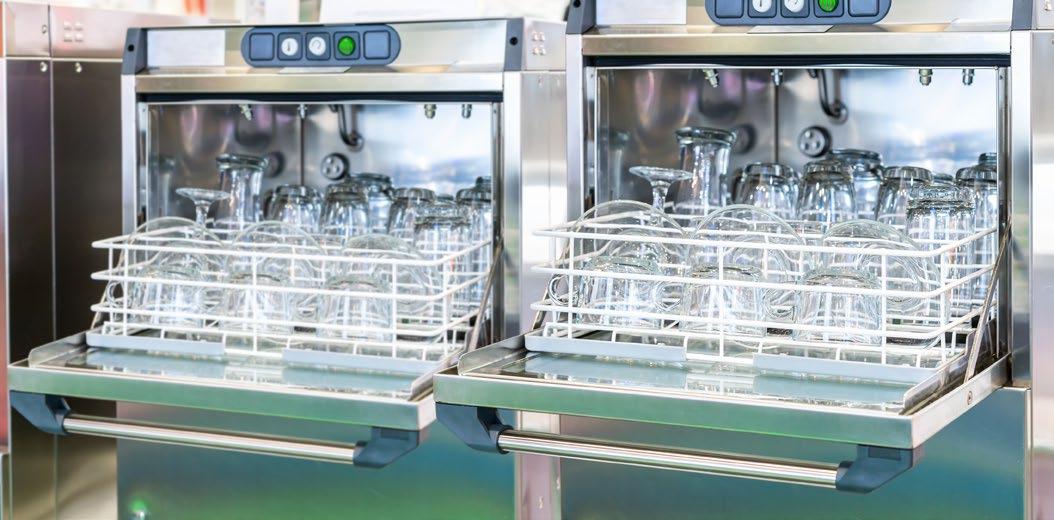
The hospitality sector has a relatively large environmental footprint and, Emilio notes, “As we’ve emerged from slowdowns caused by the pandemic, consumers have ramped up travel habits, bringing renewed demands on the hospitality sector.”
While travel helps tourist destinations recover economically, the hospitality industry accounts for 1% of global emissions. Recently, the ITP suggested the hotel industry should reduce emissions by two-thirds before 2030 and 90% by 2050.
In response, many within the industry are driving change. Emilio said, “The hospitality industry is implementing practices and technologies to alleviate pressure on water resources – while maintaining high customer service standards.”
Using less water uses less energy but, in such a competitive industry, sustainability cannot impact profitability. In the same way, online reviews can quickly damage reputations, so quality of service must remain unaffected.
Extracting, moving, and treating water requires energy, but it is essential for room cleaning, laundry, food preparation, bathing, and countless other tasks, so how can hospitality use it more sustainably? For Emilio, technology is one answer:
“By aiming to employ smart water use strategies and technologies, businesses can improve efficiency across both water and energy. Digital solutions enable the most significant savings, helping businesses get more out of their operations.”
Most importantly, this includes existing technologies, smoothing the transition:
“What gives me hope is that we don’t have to go to the moon to solve the problem. We have the tools and technology to make the difference, and there is significant potential for the private sector to be a major driver of progress.”
Within hospitality, water saving technology can reduce water usage by 20% and lower carbon emissions by 5%. Emilio notes that hospitality can balance profitability with environmental goals.
“It’s often thought that sustainability goals and business goals are at odds with each other, but that simply is not the case. The key is to adopt strategies and technologies that deliver double benefit. Ecolab’s Water for Climate program is designed to help businesses meet their ambitious climate goals without compromising business growth.”
Emilio added that one major hospitality brand in North America saved over 57 million gallons of water a year without affecting the guest experience.
An example of how hospitality organisations achieve environmental aims is Ecolab’s partnership with Vail Resorts. This operator, with 41 mountain resorts, intends to reach net zero by 2030. Ecolab’s Aquanomic Laundry and SMARTPOWER warewashing programs reduced wash time, water usage, and water temperature to enhance energy efficiency.
In addition, Ecolab’s Oasis Pro Housekeeping program, which uses concentrated liquids to reduce packaging waste, supports Vail Resorts’ goal to achieve zero landfill waste by 2030. Vail Resorts saved 5.2 million gallons of water, 4.1 billion BTUs of energy, and 225 metric tons of greenhouse gas emissions.

Reducing water use benefits the environment while also lowering energy costs and water bills. In waterstressed regions, businesses can cope with any restrictions on water use and preserve this precious resource for surrounding communities.
“With regard to the future, the water we have today is the same water we’re going to have in 2050 and beyond. Ecolab’s vision for a water-resilient future relies on immediate and collaborative action to address the water crisis. I encourage everyone to adopt a water stewardship mindset, which views water as a shared resource.”
With a note of optimism, Emilio believes that the hospitality industry is serious about its environmental responsibilities:
“We empower organizations to step up sustainability commitments to protect their operations and communities for years to come. In my role as Chief Sustainability Officer at Ecolab, I see how our customers are leading the work to reduce emissions, conserve water and steward our planet.”
Learn more: ecolab.com
 Written By | NATASHA POSNETT
Written By | NATASHA POSNETT
Carbon capture has a huge role to play in climate mitigation. Many new technologies are being researched and piloted, one of which is the use of seaweed to remove carbon dioxide from our atmosphere.
Seafields is the UK-based aquaculture business who are executing this unique idea. They are focused on delivering innovative solutions to tackle climate change and aim to remove 1Gt of CO2 from the atmosphere each year by 2032- with the help of a massive amount of seaweed!

Seafields has chosen Sargassum, a free-floating macroalgae, to use in their aquafarms. They believe it is one of nature’s best solutions for addressing climate change. Sargassum has a high carbon-to-nutrient ratio, doubles in size every two weeks and can continue to grow to an almost unlimited scale. It grows on the ocean’s surface and absorbs more carbon dioxide per square meter than plants found on land.
Seaweed is found in every ocean around the world. Its ubiquitous supply is one of the great aspects of this
project. Sargassum is now found in The Great Atlantic Sargassum Belt, extending from the Caribbean Sea all the way to the West coast of Africa.
The premise is that huge volumes of seaweed will be grown in aquafarms in South Atlantic gyres and used for carbon capture and storage. The objective is to grow the farms to eventually reach a massive 94,000km², roughly the same size as the whole of Portugal.
The Sargassum will be harvested, along with its stored CO2, and then compressed, baled and sunk to the ocean floor- approximately 4000m deep in the abyssal plain of the Atlantic Ocean- where it will remain stored, effectively removing CO2 from the atmosphere.
Seafields offers a unique way of removing CO2 from our atmosphere and addressing climate change.
Ultimately, they are enhancing a naturally occurring process on a vast scale.
CEO of Seafields, John Auckland, spoke to the point:
“Most nature-based solutions for carbon mitigation keep carbon in the fast-moving carbon cycle, where it is vulnerable to being re-released. Forest fires, for example, are going to increase as the planet warms, potentially unlocking all the stored carbon that’s contained in the biomass and accelerating rather than slowing down climate change. With our method, we are still leveraging the power of nature to draw down carbon but ensuring that it gets locked away for potentially geological timescales. Importantly, we move the carbon from the fast to the slow-moving carbon cycle.”

Carbon capture and storage projects often act on a relatively small scale. One of the exciting points of Seafields is that it is located in the ocean, giving it much more room for potential growth.
Auckland explained:
“Our oceans cover 70% of the planet’s surface, so our method has much more available space to operate in than most nature-based or technical carbon removal solutions. The Caribbean and Gulf of Mexico provide the biggest opportunity initially, given there’s so much Sargassum in the region already. But we can theoretically build coastal farms anywhere in countries with coastlines in the tropics and huge megafarms in the vast ocean gyres, which take up a significant area of the planet’s surface and are biologically benign. They’re the safest space to grow such high quantities of biomass.”
Seafields began testing a year ago in the Caribbean to gain critical insight into how the technology will play out in the real world. In June, they announced the success of the trials, a positive step in their journey.


It won’t all be plain sailing for Seafields. Setting up new technology on such a large scale will come with significant challenges. However, if risks are not taken, breakthroughs will never be found. To find the best climate
mitigation solutions, bold moves need to be made, which is precisely what this project is doing.
Seafields is just starting out and they have a lot of exciting work to pursue. Their next venture will be to test the technology of upwelling pipes, used to provide the seaweed with nutrients, and will be an essential next step for them.


It will be fascinating to see how Seafields develops in the near future and the results that they begin to see. Of course, circumstances will not change with the climate crisis overnight. Still, with any luck, this new technology will work as a successful and sustainable carbon capture solution. The use of technology to help overcome climate change and all its associated challenges is remarkable, and Seafields has shown us how innovative thinking can be used to design a project that might ultimately help to reduce CO2 levels around the world.
Learn more: seafields.eco
Q1) What is water leak detection and why is it important?
Water is transported from storage facilities (e.g. reservoirs) through a pipe network to point of use (e.g. households). District Metering Areas (DMAs) are designed into the network to identify leaks so they can be repaired to minimise loss of water and revenue.

Q2) What is the most effective way to prevent water leakages?
In one word prevention. The network should not have any leak paths through joints in the pipework or other equipment (e.g. pumps). This is easier with a new network but more challenging with older networks.
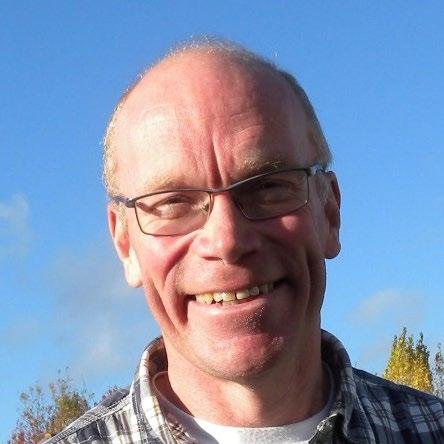

Q3) What do you do once a water leak is detected?
The leak needs to be repaired as quickly as possible. Sometimes this would mean isolating the pipe and a bypass line might be needed to maintain the supply while the repair is made.
Q4) How can someone monitor water and prevent leakage with ABB’s leak detection technology?
ABB’s industry leading AquaMaster4 water flowmeter has an accuracy of up to ±0.2% of reading, which is sensitive enough to reliably detect a toilet flushing during the night. A reduced bore sensor enables the flow meter to measure much lower flows than a full-bore sensor which makes it ideal for low flow (during the night) leak detection. As well as flow rate the AquaMaster4 can measure pressure which can provide additional information to the leak detection system.
Normally these meters are installed in very remote applications which can make mechanical and
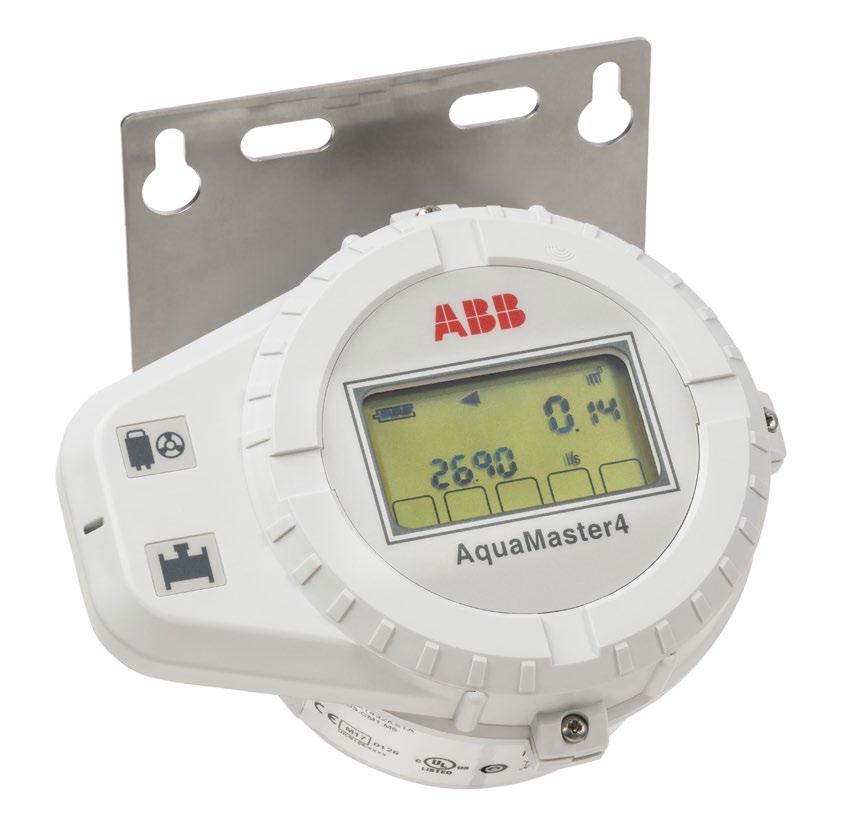
electrical installation challenging. In most clean water applications, the reduced bore sensor can simplify the mechanical installation by only needing 0D (zero diameter) upstream and downstream straight run lengths. The original AquaMaster was the first battery powered electro-magnetic flow meter and has an in-built data logger capability, thereby simplifying the electrical installation. We are also developing the implementation of latest mobile comms technology (e.g 5G) to future enhance the capability of the AquaMaster4.
Q5) What is the main challenge you face regarding water leak detection?
In steady rate conditions a simple change in flow rate would indicate a leak. However, in a water network the flow rates vary significantly in a day with low flow rates during the night and high flow rates during the evening. Therefore, dynamic modelling must be implemented and AI is also being looked at to identify actual leaks during operating conditions.
Q6) What advice would you give someone looking into water leak detectors for the first time?
The leak detection system must be designed, implemented and maintained as effectively as possible. So seek advice from suppliers, with experience in this specialised area, to determine the best solution for your application.
Q7) How do water leakage technologies like ABB’s AquaMaster4 water flowmeter help deliver net zero (by the 2050 target)?
Net Zero is targeted reduction in CO2 emissions to tackle climate change. Whilst the water industry is not as energy intensive as other industries, such as a refinery, the water treatment process does use machinery which has a carbon footprint. A water leakage system will prevent leaks which means that less water needs to be treated. Subsequently water treatment plants can be smaller and more efficient which will reduce its carbon footprint.
Water is a scarce resource and an impact on the globe similarly to CO2 emissions. In just forty years, the world’s population has doubled, reaching an estimated 7.7 billion people in 2018. This has put tremendous strain on our natural resources with demand for fresh water being roughly quadrupled due to this population growth. This demand is thought to incrementally change in the coming decades. By 2030, the world’s population will require 50% more fresh water. We will always need fresh water and leak detection will assist in maintaining this valuable resource to ensure a more sustainable environment now and for future generations.
Learn More: abb.com

Climate change is altering landscapes around the world. One place that is feeling the effects particularly harshly is Canada’s North. Sea ice is melting, ice seasons are getting shorter, and Northern communities are facing tough new realities in their daily lives. Finding ways to adapt and thrive in these conditions is vital.
Modern technology is fantastic; it has helped us to overcome many problems and has ultimately got us to where we are now in the 21st century. We would be living a very different life without it! But what should not be forgotten is that humans lived for hundreds of years before technology existed. The strength of traditional knowledge should be embraced when looking for solutions. The best way to address climate change adaptation is by combining traditional knowledge with modern technology.
SmartICE is doing just that. They are working with communities in Northern Canada and combining their ice monitoring technologies to address climate change.

Traditional knowledge is a massive part of SmartICE and its vision, but the partnership with its technologies
is what makes it so effective.
Sea ice is crucial to Inuit communities and forms a vital part of their traditional way of life. They rely on it to hunt and gather food to feed their families, collect wood to heat their homes, visit family and friends and practice cultural activities. All of these require them to assess the ice’s safety before proceeding. SmartICE’s two pilot pieces of technology, the SmartBUOY and the SmartQAMUTIK, were developed with that in mind.
SmartBUOYs are stationary sensors (approximately 8 feet long) inserted into the ice to measure ice and snow thickness using thermistors. The thermistors measure the temperature of the air, snow, ice and water, and the readings are used to create a temperature profile of each section to determine the thickness of the ice.
The SmartQAMUTIK/SmartKAMUTIK is a sled-based sensor that is towed behind a snowmobile and provides real-time ice and snow thickness measurements. The SmartQAMUTIK offers valuable information about sea ice conditions along community trails. This equipment uses a sensor to measure the thickness of the ice and snow based on the salinity of the seawater. It transmits electromagnetic signals through the snow and ice that induce electrical currents in the conductive salt water and return to the sensor, producing an instantaneous ice and snow thickness measurement.
The data from both of these devices is made available to the community online, where they can use it to assess the safety of their route before they travel. Community members can also share and document their own ice posts, including photos, ice Inuit Quajimajatuqangit (Inuit knowledge), and information about current conditions and ice formations using SIKU, the Indigenous Social Network.
It’s the perfect pairing! Each one supports the other, creating a beneficial and sustainable outcome for everyone involved in the projects.
One of SmartICE’s founding principles is to augmentnot replace- Indigenous knowledge of safe ice travel. The advanced monitoring technologies enable communities to make more informed decisions before travelling on the ice, but their traditional knowledge is what will ultimately keep them safe.


Modern technology provides numerous benefits and will be imperative for climate change adaptation globally. However, the impacts on local communities always need to be considered. SmartICE ensures they preserve local cultures and lifestyles while growing social and economic development opportunities.
SmartICE’s Emma Dalton spoke to the point:
“As the climate crisis advances, integrating Indigenous knowledge with modern technology is essential. SmartICE technologies, hand in hand with Indigenous Knowledge, equip community members to make more informed decisions about travelling on the sea ice.”
The social aspects of SmartICE are wonderful to see, and it makes you smile to learn about their success across all the communities they are working with. They empower Indigenous communities to lead in all operations and decision-making to tackle the changing ice conditions. SmartICE uses the vast potential of Indigenous women, men and especially
youth to embrace science, technology and traditional knowledge as a vehicle for sustainable economic development and well-being in their communities. In just three years, they trained and employed over 100 Inuit as producers, operators, and technicians of their technology.
Adapting to climate change is a challenging process, but a unique and wonderful partnership is formed by harnessing the knowledge of local communities and combining it with innovative technologies. It is all about setting up sustainable projects that can have a successful and long-lasting impact where it matters the most.
Dalton explained:
“SmartICE will continue to expand operations by partnering with Indigenous communities across the North. It’s about working together in the face of climate change.”
Learn More: smartice.org
 Written By | DARBY BONNER
Written By | DARBY BONNER
In the race to combat climate change and achieve global sustainability goals, hydrogen has emerged as a key player. However, there is a significant hurdle to overcome: the majority of hydrogen production today is derived from high-carbon sources, such as natural gas and coal. As the world continues to grapple with the urgent need for decarbonization, finding sustainable and low-carbon methods for hydrogen production is of paramount importance. Against this backdrop, Ohmium is making waves in the water world by making green hydrogen a reality today. The company is accelerating global decarbonisation with scalable and versatile green hydrogen solutions for heavy industry, power, and transportation.
Ohmium uses an electrolysis process to produce green hydrogen from water. They use renewable electricity to split the water molecules apart into separate hydrogen and oxygen atoms. The hydrogen from this process has significant potential to decarbonize hard-to-abate industries (like steel, cement, and petrochemicals) and contribute to our transition to net zero energy systems by 2050.
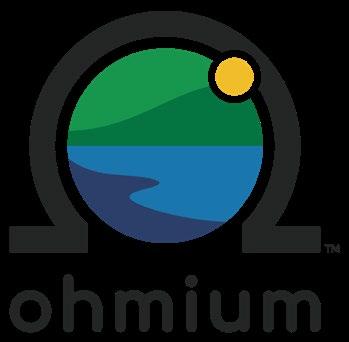
To learn more, we spoke to Dr Rasool Aghatehrani, Chief Marketing and Strategy Officer at Ohmium.
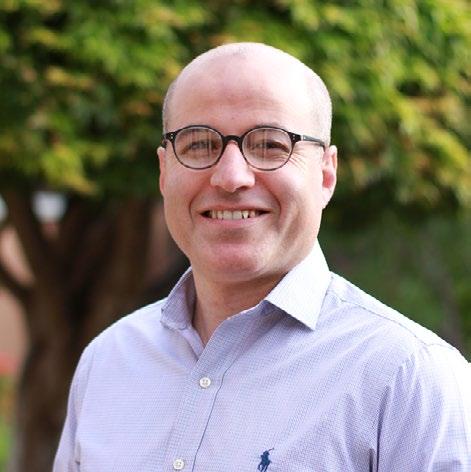
To produce hydrogen for the electrolysis process, pure water is required. However, in some areas, it may not be available. That’s where Ohmium
comes in. Ohmium has partnered with Aquastill, one of the leaders in modular membrane distillation technology, to integrate water distillation systems with green hydrogen production, so that their clients do not need to be concerned about using limited pure water supplies.
This means that fresh water, seawater, and wastewater can all reach a level of purification that is considered ‘pure’. For example, the partnership enables Ohmium to co-locate with offshore wind farms where wind turbines are in use, using desalinated seawater and the abundant renewable energy produced by the wind farm to produce green hydrogen.
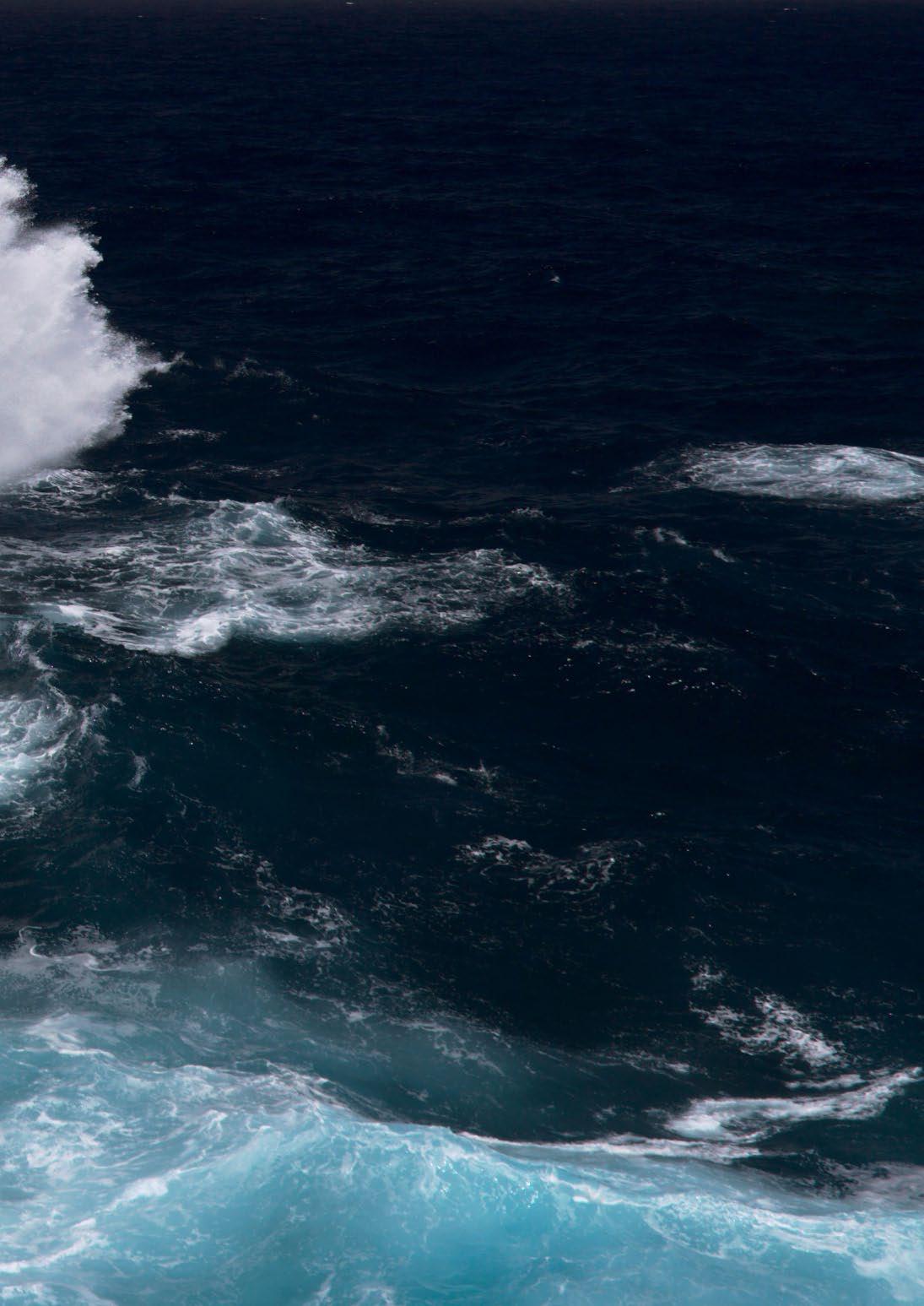
Ohmium and Aquastill’s modular desalination system uses the waste heat from the electrolyzer process to drive the water desalination process. So, instead of using significant additional electricity during desalination processes, the heat that would otherwise dissipate into the air can be reused, resulting in a more sustainable solution and providing more value to the projects.
In locations that suffer from water scarcity, the availability of water may be a concern for project developers. But, by adopting a solution such as Ohmium’s, developers can use wastewater or seawater to produce high-purity hydrogen. This not only provides value to the projects, but it also potentially increases the potential for developing additional hydrogen projects and supports the decarbonization of hard-to-abate sectors.
While green hydrogen is well-proven, it hasn’t been widely commercialised until very recently. Ohmium has focused on designing their product to leverage the advantages of the technology for mass production of hydrogen, while many of the permitting authorities and standard bodies are still developing the standards and permitting processes to enable and facilitate the development of the project.
Rasool said, “I don't call it a challenge, I would call it an opportunity. The opportunity is to develop all of these
standards because, at the end of the day, the goal for all of us is to live a more sustainable life. And hydrogen could play a very important role there.”
The green hydrogen industry has the opportunity to work with permitting authorities and standard bodies to develop all of the frameworks required to expedite the development of hydrogen projects.
Ohmium’s PEM electrolyzers use 100% renewable energy to safely produce green hydrogen, a flexible resource that can decarbonize industries worldwide.
Ohmium’s PEM technology is very dense, which helps to resolve challenges related to land availability and space. It can also generate hydrogen at low-pressure compression efficiently, resolving the challenges of having to purchase too many stages of compressors.
Read more: ohmium.com/our-product
Ohmium is using their PEM technology and system design to provide a modular solution. Customers receive electrolyzers that are fully assembled at the factory. They’re compact and rapidly deployable, so they can be easily transported via truck and quickly installed with a forklift. This provides customers with a pilot-to-scale approach, enabling organisations to ‘test and learn’ when it comes to utilising green hydrogen, before scaling from megawatts to gigawatts in a matter of weeks.
Rasool said, “The nice thing about this is that, as the market is growing, many people like to start smaller and expand their projects as the market grows. Our product is well suited to support that approach, in terms of having a smaller number of modules in the beginning and then expanding the project as the demand for green hydrogen grows.”
Learn More: ohmium.com
 Written By | DARBY BONNER
Written By | DARBY BONNER
BeeX is a tech start-up that designed and manufactured the A.IKANBILIS, a hovering autonomous underwater vehicle (HAUV) that operates underwater, kind of like a self-driving car but in the ocean. The HAUV is designed to capture important information about underwater and marine infrastructure. Their goal is to provide cost-efficient analysis of underwater structures to asset owners, using A.IKANBILIS’s learning brain allows it to adapt and create valuable datasets. They are focused on the renewable sector right now, especially offshore wind and floating solar farms.
In Singapore, water analysis typically involves a combination of methods. Divers collect water samples, and these samples are sent to labs for analysis. While these approaches have been effective enough in the past, they can be very time-consuming, expensive, and risky for divers. Moreover, waiting for lab results can
cause delays in obtaining crucial water quality information. Therefore there is a demand for more efficient and real-time monitoring solutions to overcome these limitations and ensure prompt and accurate analysis.
Grace Chia Co-Founder & CEO of BeeX
The A.IKANBILIS is a hovering autonomous underwater vehicle (HAUV) developed by BeeX, which can be compared to a self-driving car for underwater use. Its purpose is to capture important information about underwater and marine infrastructure. The vehicle is smart and learns about its environment and captures data that can provide cost-efficient analysis of underwater structures to asset owners. This method is more cost-effective and less operationally complex than traditional approaches such as using divers or remotely operated vehicles (ROV).
The A.IKANBILIS can be used in various industries that involve underwater assets, such as marine vessels that transport goods, coastal protection, aquaculture,
internet cables, and energy sources. However, BeeX is currently most focused on the renewable sector, where there is a dense infrastructure of offshore wind and floating solar farms.
With A.IKANBILIS, BeeX can gather precise and comprehensive information about underwater structures and marine environments, enabling more accurate analysis and decision-making. But that’s not all! A.IKANBILIS also helps in reducing our carbon footprint. Since it operates underwater autonomously, there’s no need for large surface vessels or extensive equipment, which means less fuel consumption and environmental impact. And let’s not forget about safety. By utilizing A.IKANBILIS, BeeX can minimise the number of on-site personnel in risky places; Instead of sending divers into potentially dangerous underwater situations, people can rely on the technology to perform the necessary inspections and data collection.
So, in a nutshell, A.IKANBILIS addresses the need for better data, promotes environmental responsibility, and enhances safety by reducing human exposure to risks. It’s a smart solution that brings efficiency and innovation to underwater operations.
ROVs rely on a tether, which can be a real hazard, risking entanglement or even losing the ROV altogether. Plus, you typically need a manned vessel due to the tether, which adds to the complexity of deployment and increases the carbon footprint. A skilled pilot required to operate an ROV takes years of training before they have the experience to collect high-quality data. At this junction when ocean data is so important, how do we overcome this gap?
Data quality of data collected with an ROV is heavily reliant on the skill of the pilot, introducing another variable. The thing about ROVs is that precise positioning data are not usually included (since it was
pilot-flown), making it challenging to identify exact locations for follow-up work. On the other hand, A.IKANBILIS is a breeze to operate. It tracks the exact positioning of the vehicle during missions, which allows asset owners to pinpoint the site of an anomaly for follow-up work like repair work. The A.IKANBILIS can fly autonomously, intelligently finding the best path, excels at stationkeeping, and battle currents with finesse to perform admirably in real-life situations. It’s like having a skilled pilot and advanced technology wrapped up in one impressive package.
One of the key areas where BeeX improves safety in our oceans is to eliminate the need for humans on vessels altogether. Unlike traditional ROVs, which require support vessels with up to 60 people for power supply and real-time communication, A.IKANBILIS operates autonomously. This means we can conduct underwater operations without putting human lives at risk in potentially hazardous environments. By removing the necessity for human presence on vessels, we take a big step forward in enhancing safety and minimizing potential accidents or injuries.
For example, BeeX has a partnership with ST Engineering who can provide an unmanned surface vehicle (USV) to launch the A.IKANBILIS. This partnership between BeeX and ST Engineering forms the world’s first fully integrated autonomous surfaceto-underwater inspection system. It’s a smart and innovative solution that prioritises the well-being of both the environment and the people involved.

BeeX and A.IKANBILIS are making remarkable strides in reducing environmental footprints. Traditional vessels used for underwater operations can generate around 7000 tons of carbon dioxide emissions per year per vessel. However, BeeX tackles this issue head-on by eliminating the need for such vessels altogether. With A.IKANBILIS, our hovering autonomous underwater vehicle, we remove the CO2 emissions associated with vessel operations. Additionally, A.IKANBILIS is exclusively powered by rechargeable electrical batteries, which are produced in-house. This means we can operate in an environmentally friendly manner, without relying on fossil fuels. It’s a smart and sustainable approach that contributes to reducing our impact on the environment.
Learn more: beex.sg
CSIRO is Australia’s National Science Agency. Their missions involve major collaborations focused on leveraging national science and technology partnerships to deliver impact and respond to Australia’s biggest challenges.

AquaWatch Australia is a collaboration CSIRO aiming to develop a ‘weather service’ for water quality, which is under increasing pressure from human activity and climate change. Their goal is to achieve this by establishing an integrated ground-to-space national water quality monitoring system to help safeguard freshwater and coastal resources in Australia and around the world - this project will issue the world’s first water quality forecasts.
Currently, Australia’s water quality of waterways is impacted by increasing human activity such as urbanisation, population growth, land use changes, deforestation, irrigation, farming needs, and contamination.
Water quality is also under pressure from the effects of climate change. As variations become more marked, the environmental impact from drought, bushfire sediment, storm events, toxic algal blooms, and contamination is growing in the region. As water is one of Australia’s (and the world’s) most essential resources, changes in water quality greatly affect both the natural environment and the people occupying it.
CSIRO is designing and developing AquaWatch as a ground-to-space water quality monitoring system providing near real-time updates and predictive forecasting, where it will essentially be a ‘weather service’ for water quality.
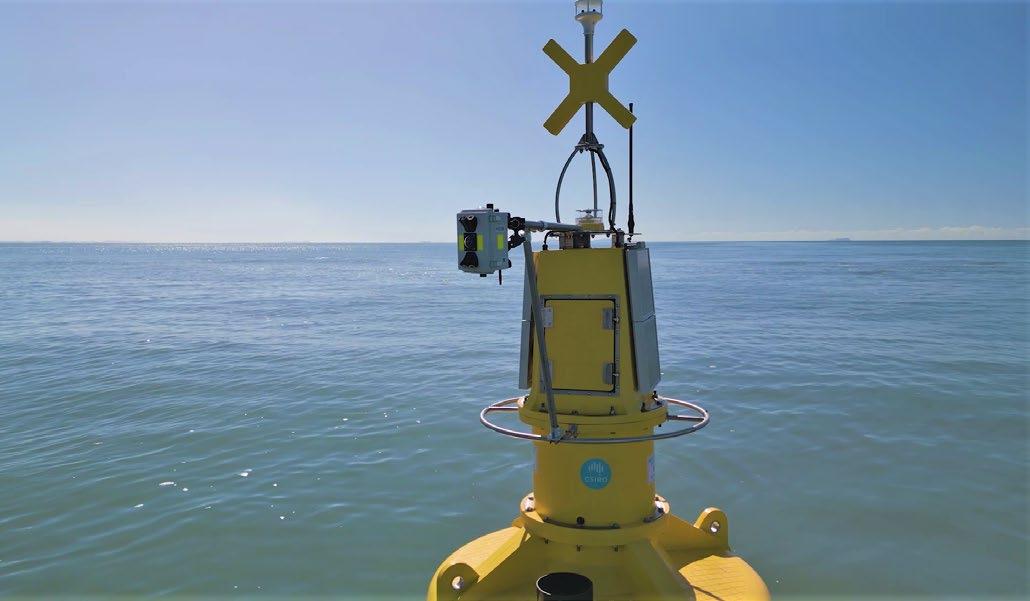
The system they are developing combines data from satellites and water-based sensors and processes this in an entirely new way with modelling and AI to provide updates and forecasts. It allows CSIRO to monitor water quality at a much larger scale than done before, with validation built into the system to ensure they don’t trade scale for accuracy.
Data streams from both satellite sensors and water-based sensors are collated in the AquaWatch data system on

CSIRO’s EASI platform, which uses cloud computing to process the raw inputs into user-ready data. This can then be queried and used for modelling and machine learning processes. In the future, CSIRO aims for this to be accessible for partners via a dashboard, and one day, they hope to see the outputs used by a range of platforms to provide water quality updates and forecasts to anyone in Australia.
The AquaWatch pilot sites allow CSIRO to test the system for a range of real-world applications, ensuring the design is fit for purpose. For example, at their Lake Tuggeranong pilot site in Australia Capital Territory - Canberra (ACT), they are monitoring algal blooms in an inland water body. In Queensland (QLD), they are monitoring the flows of sediment from the Fitzroy River out to Keppel Bay and the impacts of this on biodiversity in the Southern Great Barrier Reef. Overseas in Malaysia, AquaWatch is being tested to monitor dissolved carbon loss from mangrove forests.
Beyond that, each pilot site adds to CSIRO’s in-situ sensor network to support validation of the satellite data fed into the system where their partners for the pilots not only get access to their site’s data but also access to global data collected as part of AquaWatch.
Satellite data is incredibly important for achieving the kind of national and global scale needed for AquaWatch. However, the most accurate data will always come from sensors down here on Earth, just above and below the water. Using in-situ sensing for AquaWatch enables CSIRO to validate what we’re seeing from space and the forecasts they are generating using modelling and AI. This validation helps CSIRO to maintain a certain degree of
accuracy, even as they monitor and forecast at a continental scale.
In-situ sensors are also needed to provide more frequent measurements of rapid changes in water quality, than the frequency we may get from satellites.
AquaWatch is a great example of Australian science creating an impact globally, as water quality is a universal challenge. They already have five pilot sites being established with international partners across Chile, Colombia, Malaysia, the US, and Vietnam to test AquaWatch around the world.
We hope that the result of this project will not only be the first water quality forecast, but also the best way to protect our drinking water and the natural resources within it.
Learn more: csiro.au
Image Credits:
1. Satellite image of Keppel Bay
Satellite image from Sentinel Hub showing sediment flow from the Fitzroy River out to Keppel Bay and the Great Barrier Reef.
Credit: European Union, contains modified Copernicus Sentinel data 2023, processed with EO Browser
2. CSIRO’s HydraSpectra water sensor
HydraSpectra water sensor mounted on a buoy on Darumbal Sea Country at Keppel Bay, where CSIRO is monitoring sediment flows.
Credit: CSIRO
3. Sentinel-2 satellite
The European Space Agency’s Sentinel-2 satellite is one source of satellite data for the AquaWatch Mission.

Credit: European Space Agency:https://www.esa.int/ESA_Multimedia/ Images/2008/11/Sentinel-2
4. Blue green algae
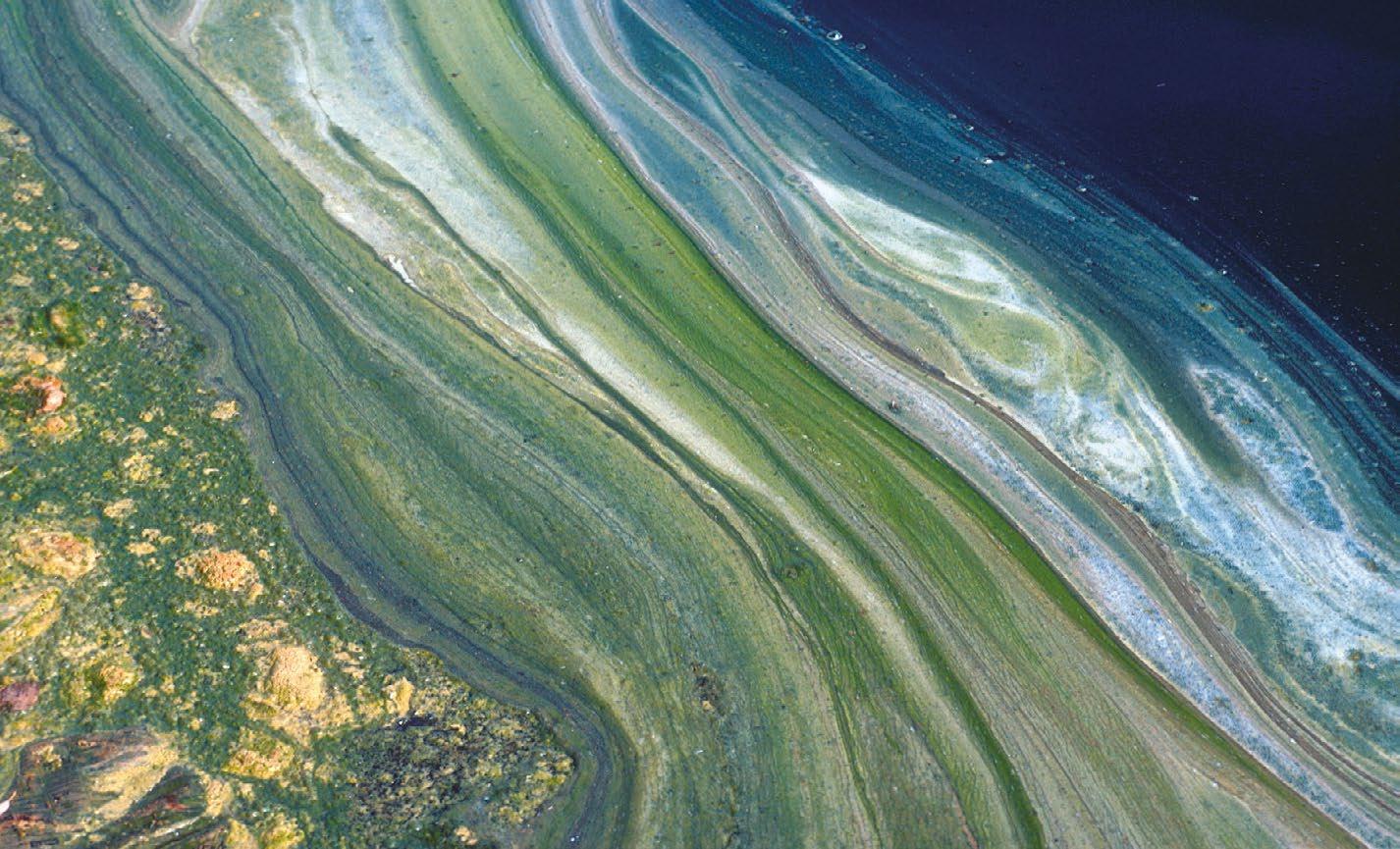
Close up shot of an algal bloom such as those affecting a number of waterways around Australia, including AquaWatch pilot site at Lake Tuggeranong.
Credit: CSIRO
 Written By | MARTYN SHUTTLEWORTH
Written By | MARTYN SHUTTLEWORTH
"Eventually man, too, found his way back to the sea. Standing on its shores, he must have looked out upon it with wonder and curiosity, compounded with an unconscious recognition of his lineage... He built boats to venture out on its surface. Later he found ways to descend to the shallow parts of its floor…
- Rachel Carson, The Sea Around Us
… will he conceive a way to capture power from its waves?
Mocean Energy is a fast-growing SME based in Scotland, developing wave energy converters (WECs) to capture renewable power. Wave energy can help balance electricity grids, provide power to remote locations, and support decarbonisation. Here, Andrea Caio, Mocean Energy’s Business Development Manager, gives valuable insights into wave energy, its history, and unlocking its potential.
We can think of waves as a concentrated form of wind - or even solar - energy. Winds arise from Earth’s pressure systems, strongly influenced by the sun. As the wind blows across the sea’s surface, waves form, becoming more energetic the longer the stretch of water.
The energy carried by waves is estimated at ~29,500 TWh/year, of which ~4,000 TWh/year could be accessed for energy conversion – this is more than Europe’s total annual electricity consumption. A recent study determined the deployable wave capacity in Great Britain, Ireland and Portugal as 24.8, 18.8, and 15.5 GW respectively. The challenge is converting wave energy into useful power: going from waves to watts. From many technology concepts, some “winners” are emerging, including Mocean Energy.
The first commercially-deployed WECs were wavepowered navigational buoys invented in the 1960s by Yoshio Masuda in Japan. UK wave research began in the 70s and showed promise, but was overshadowed by nuclear power in the 80s. In the 2000s, wave energy gained industrial focus and major companies like Pelamis deployed large MW-scale devices. However, they went “too big, too soon”: devices were capital intensive and insufficiently de-risked to be cost-competitive. With inadequate resources to iterate and innovate, they eventually folded.
Nevertheless, important lessons surfaced, such as the need to de-risk, learn by doing, and consider at-sea deployment as a fundamental development step, not just an end goal. As a second-generation company, Mocean Energy is implementing such lessons technically and commercially. We start small, with commercial machines providing 10’s of kW to off-grid equipment offshore, before scaling to larger utility grids. Our first WEC, Blue X, is currently connected to a micro-grid subsea as part of Renewables for Subsea Power (RSP).

Wave energy complements other renewable sources. The delay between wind and waves makes wave energy available when wind resources drop. There is also daily and seasonal complementarity with solar. In the Northern Hemisphere, winters have lower sun concentration but higher wave concentration. These resources do not compete and a diverse mix makes renewable grids more efficient. Recent studies show the effectiveness of waves in lowering overall grid emissions, energy dispatch costs, and energy storage requirements.
A flourishing wave energy industry creates new jobs and supply chains, and supports energy security. For example, waves can power islands and remote communities previously relying on imported diesel. Many have limited land for solar and want to avoid wind’s visual impact, yet have plentiful waves and strong cultural connections to the sea.
Wave energy unlocks opportunities in markets beyond utility grids. Mocean Energy is focusing on off-grid applications, where WECs reliably deliver power and communications locally to offshore and subsea equipment. WECs can replace diesel generators, enable resident subsea robots, and avoid the need for vessels or trenching long cables from shore.
The UK has aging infrastructure in the North Sea and is missing its 2030 decarbonisation targets. Technologies exist but efforts are disjointed, so collaborating with
Continued on page 26
traditional energy sectors like oil and gas unlocks decarbonisation and can facilitate the energy transition.
Our joint industry project, RSP, is demonstrating a real integrated solution for wave powered subsea assets, primarily for carbon capture and storage. Mocean Energy’s technology could suit other off-grid uses, including ocean science sensors and Marine Protected Area monitoring.
Mocean Energy’s WECs are floating hinged rafts: waves cause the two hulls to pitch, converting the resulting motion with a generator in the hinge and exporting it via a cable. The goal is capturing a wide range of waves (to be efficient) while being relatively insensitive to extreme seas (to improve survivability) – our technology achieves this with unique geometries and optimisation.
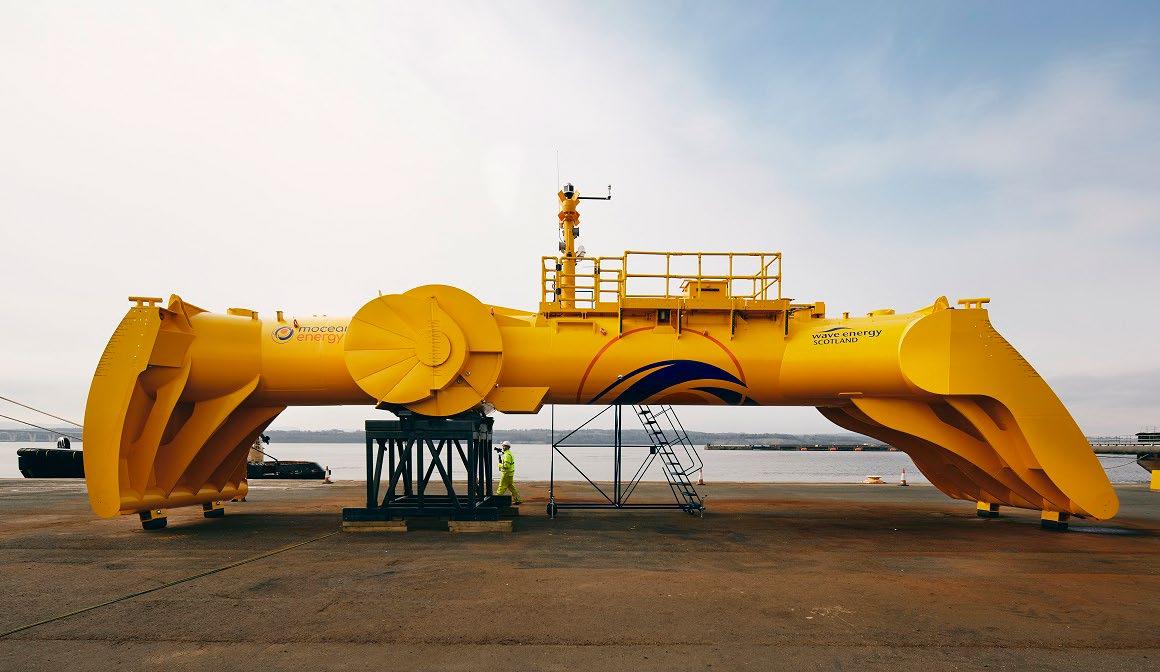
My perception is of growing stakeholder interest and industry traction. I’m encouraged by the shift beyond levelised cost of energy towards wider system benefits.
Mocean Energy hopes to show that, if WEC technology works at the tens of kW scale, it can work at hundreds and thousands of kW. We just need time, alongside a longer-term policy and funding vision, to learn, innovate, and cut costs like wind and solar did over decades. Solar panels were first used in space in the 1950s and were very expensive, yet look how far they’ve come!
In the next 2-3 years, commercial WECs will be powering off-grid equipment and islands, with larger arrays by 2030, including combined wind-wave farms that improve cost and footprint efficiencies. Mocean Energy and other companies are demonstrating that wave energy is technically – and commercially – viable, and significant for collective decarbonisation.
Mocean Energy Images Copyright
Colin Keldie/Mocean Energy
Learn more: mocean.energy
Mocean Energy is leading a £2m collaborative industry initiative called Renewables for Subsea Power (RSP), where wave power is exported to an intelligent subsea battery, an autonomous underwater vehicle, and a subsea control module. It has been fully operational since February 2023 in Orkney (Scotland), with technology integrator and energy operator funding and participation.

The peace of mind that comes from working with trusted partners
Deep capabilities & advanced expertise dedicated to customer success
One-stop shop for multiple solutions
Proven capabilities to bring the solution you need where you need it

Expertise beyond the product
Solving various challenges with membrane excellence










Reliable & durable range of modules & racks configurations
World class UF manufacturing & quality
www.dupontwatersolutions.com
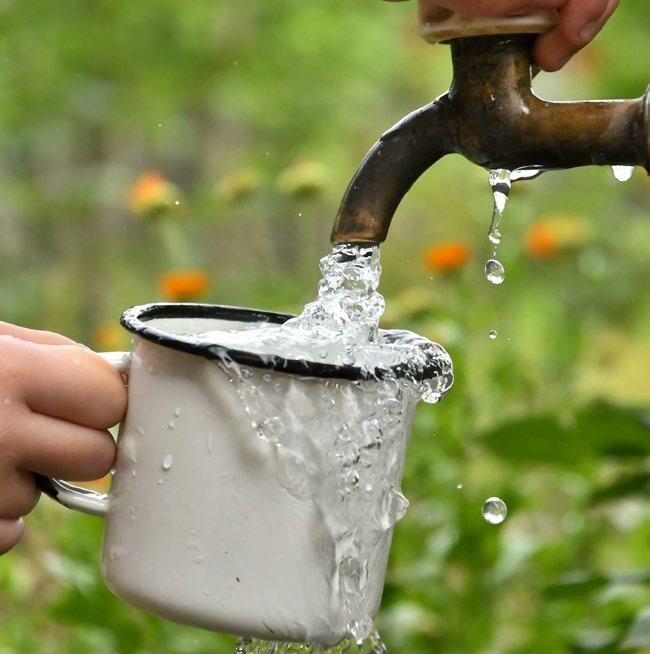



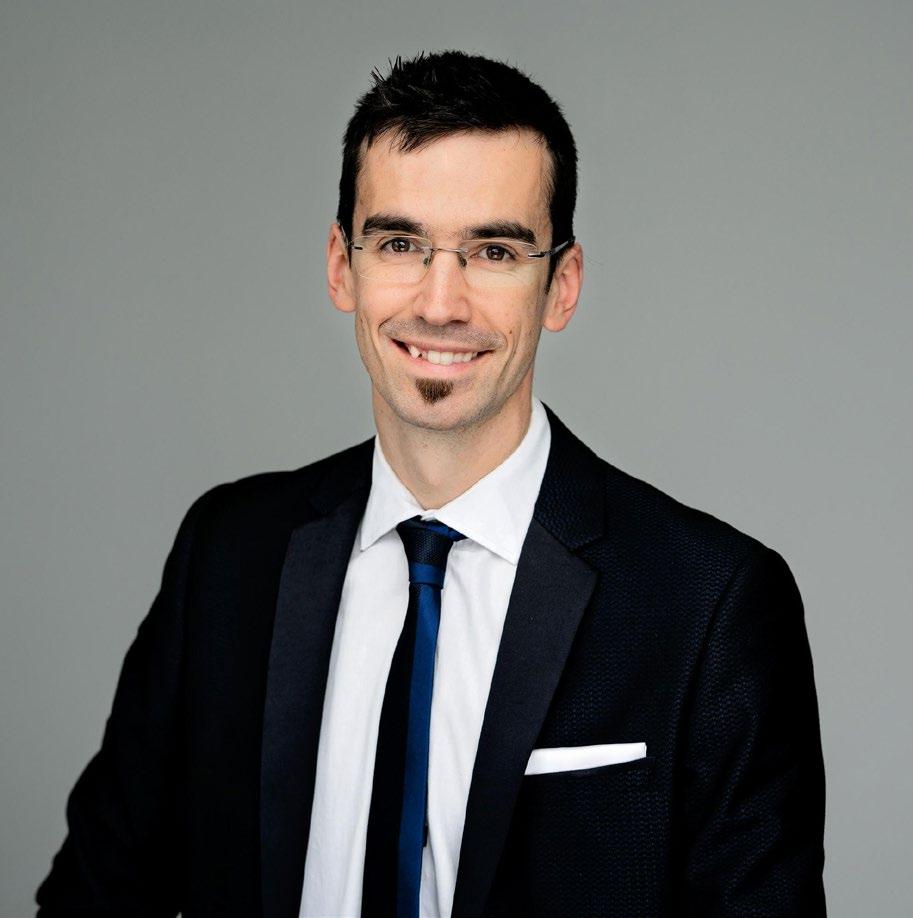












Join us in this edition as we explore the crucial role of water technology in tackling the impact of climate change. Gain valuable insights as we delve into the pressing issues surrounding these topics.





What springs to mind when you hear the words ‘water solutions’?
Water is the world’s fundamental building block for life. Solutions to water challenges must support life, considering the health, safety, and well-being of everyone around the world. Water solutions must also be localized—as water challenges are different depending on the specific region or use—and designed with sustainability and resilience at the forefront.
I see digital tools, natural capital systems, and GHGefficient options as solutions to water’s biggest challenges.
By 2050, it is estimated 5 billion people will suffer from water scarcity by 2050…In your opinion, how can we ensure that this doesn’t happen/or try to reduce this number?
The key to solving water scarcity is PREVENTION. We must design processes and systems that reflect the needs of our world 10, 20, and even 100 years from today. Whether that means using generative design tools to help engineers discover better outcomes in the planning phases of projects, leveraging more compact and decentralized treatment solutions that reach at-risk communities, or enacting regulation that encourages better management of fresh water, preventing water scarcity is multi-faceted and will require an incredible amount of collaboration among various parts of our society.
What are the innovative water solutions that can help build resilience and adaptation in the face of climate change?
On-site treatment and reuse is one solution I’m particularly excited about. If we can use water locally, capture it, and then reuse the same water over and over again, we can reduce the need to pump and treat the water over long distances and save an incredible amount of energy and cost.
The use of saltwater hydroponics/aquaponics is another innovative solution. Over 80% of the world’s freshwater is used in agriculture. By shifting land-based agriculture to ocean/saltwater-based agriculture we can repurpose the freshwater on land for human consumption, industrial use, and nature’s supply.
Finally, emerging technologies like AI can help us more accurately assess the use of water in residential and commercial applications, recommend improvements to existing systems, and even design new ones.
Alex Rappaport ZwitterCo CEO and Co-FounderWhat are the challenges of water scarcity in your region?
As we adapt to population growth and climate change — in the United States and globally — we’re facing significant challenges around how we allocate water resources.
The U.S. is experiencing accelerated depletion of groundwaters and aquifers, as well as protracted droughts, which are worsening water scarcity and threatening food production and critical manufacturing. California dairies point to water as their main concern for the future, states around the Colorado River Basin are experiencing aridification, and food shortages due to water have increased vegetable prices by nearly 40%.
As we grapple with population growth and climate change, reusing wastewater safely and economically is imperative. Securing the future and growing industry and agriculture (food, fuel, etc.) hinges on water not being a substantial input into manufacturing. That’s why advanced treatment technologies have been developed to facilitate wastewater treatment and reuse where previously impossible.
What springs to mind when you hear the words ‘water solutions’?


Water scarcity is an urgent problem — there isn’t time to waste. Developing solutions to address the growing water crisis is one of the most pressing challenges of our lifetime.
Water is not an infinite resource; once it’s gone, it’s difficult to replace. Only 3% of the world’s water resources is freshwater, and over 70% of that is used for agriculture and industry. We need to develop solutions that enable critical industries to be resilient to climate change by increasing water reuse and to ensure the future of agriculture and industry is sound amidst a growing water crisis.
By 2050, it is estimated 5 billion people will suffer from water scarcity…In your opinion, how can we ensure that this doesn’t happen/or try to reduce this number? What are the innovative water solutions that can help build resilience and adaptation in the face of climate change?
It’s critical that water-intensive industries adopt innovative tools that enable water reuse to eliminate the drawdown of municipal water resources. The speed and quality of innovation will continue to increase as the global population looks for a wider set of tools to get ahead of the intensifying challenges of water scarcity. At ZwitterCo, our mission aims to make water reuse affordable for industry and agriculture, both to eliminate the competition between private and public supply and to make industries more resilient to climate change and water scarcity. The combination of the energy from our community and the enthusiasm and adoption of water reuse technologies in the marketplace makes what we’re doing matter.


How can the management of water resources mitigate the effects of climate change?
At Klar2O we believe that efficient water resource management is a pivotal strategy in mitigating climate change impacts. By implementing water conservation and efficiency measures, such as promoting water-saving technologies and repairing leaks, we can curtail overall water demand and alleviate supply pressure during droughts. Sustainable agricultural practices, including enhanced irrigation and selective crop choices, reduce water wastage and enhance adaptability. Flood management approaches, encompassing flood barrier maintenance and natural floodplain revitalization, directly address escalated risks from intense rainfall and climate-linked flooding. Together, these approaches can collectively bolster the resilience of water resources amidst changing climates.
When we reflect on “water solutions,” a variety of innovative strategies emerges, prominently featuring Klar2O’s groundbreaking technology. This pioneering approach not only champions sustainability but also fosters regeneration, offering contemporary solutions to modern challenges like microplastic pollution. Educating individuals, as I’ve observed, fosters mindful water habits. From efficient conservation methods minimizing wastage to advanced purification technologies ensuring safe drinking water, the potential solutions are vast. Desalination emerges as a transformative approach, converting seawater to freshwater in water-deprived regions. Groundwater recharge techniques, including rainwater harvesting and aquifer replenishment, directly confront scarcity. Among these solutions, the pioneering technology introduced by Klar2O shines. Their groundbreaking approach combines advanced filtration and purification mechanisms to address contemporary pollutants like microplastics. Fostering local water sources, promoting green infrastructure, and enforcing robust policies can significantly alleviate water scarcity.
By 2050, it is estimated 5 billion people will suffer from water scarcity by 2050... In your opinion, how can we ensure that this doesn’t happen/or try to reduce this number?
I believe that fostering global cooperation for equitable water distribution and sustainable management is the key. The daunting projection of 5 billion people facing water scarcity by 2050 necessitates collective action. This challenge demands a collective effort to ensure that water scarcity does not define our future. Strong water governance avoids overuse, while raising awareness about responsible consumption and implementing policies for water-efficient industries remains crucial. Furthermore, fostering international partnerships and innovative research drives viable solutions. The journey to secure water for all demands urgent action, policy coherence, and a shared commitment, ensuring a future where every drop is cherished.
What are the challenges of water scarcity in your region?
Ovarro supports global water utilities with the critical task of leakage reduction. Globally, around one-third of the treated water put into networks is lost before it reaches customers. But the world population is increasing and with this, demand for water – all while we are experiencing more severe drought. Widespread loss through leaking pipes is unacceptable and we need to ensure that utilities get maximum efficiency out of their assets.
By 2050, it is estimated 5 billion people will suffer from water scarcity by 2050…In your opinion, how can we ensure that this doesn’t happen/or try to reduce this number?
The urgency of the situation means companies are more willing to consider new ways of working. Water utilities need to continue to invest in innovation, support new ideas and share findings. Such liaison between utilities, suppliers, innovators, academics and governments will be the only way to drive through new ideas at the rate needed. Of course, the water community has a responsibility to educate people about the value of water. Running out of water is not an option and we all need to understand how we can use it most efficiently.
What are the innovative water solutions that can help build resilience and adaptation in the face of climate change?
Focusing on leakage, data-powered tools are being embraced globally and are transforming network management. Companies that amass large amounts of data are beginning to understand what this data can teach them about their operations – the key benefit being, it can show utilities what is happening on their networks in real-time. Among the solutions now being adopted more widely are as-a-service models, subscription-based applications with infrastructure that is entirely managed by an external supplier. This consultative service allows companies to focus on their core responsibility of water system management and leave the data analysis to external specialists. Ovarro’s LeakNavigator, for example, was launched in 2022 as the UK’s first fully-managed, fixed network leakage service.
We are now undertaking research into prioritising leak noise, allowing operators to understand which noises picked up by acoustic loggers are most likely to be large leaks. Artificial intelligence is going to be a big leap forward in helping companies work out what a leak sounds like – and is it a big leak or is it a small one? Having this information will help companies understand which leaks need to be fixed first.


By 2050, it is estimated 5 billion people will suffer from water scarcity by 2050… In your opinion, how can we ensure that this doesn’t happen/or try to reduce this number?
There is a fixed amount of water on Earth, roughly 326 million trillion gallons. This sounds like a lot. However, over 97% of this water is in the oceans and is too salty to drink. Another 2% is frozen in glaciers and on the poles. This leaves roughly 1% of the water that is available for drinking water. But that 1% is still 3.2 million trillion gallons, or just under a billion gallons per person. The problem is that it is not always near the people who need it, or it’s hard to access, and there are not always good systems in many parts of the world to deliver clean drinking water. Looking at it this way, solving the water shortage issues is a distribution and filtration problem. This will require significant investment, and while the need may be there, the funds and political will may not.
What are the innovative water solutions that can help build resilience and adaptation in the face of climate change?
Water is infinitely recyclable. Animals on Earth have been drinking the same water for millions of years. Nature has been doing a great job of filtering it. Unfortunately, man hasn’t. To solve water shortages in the future, we will need to do a better job of sustainably filtering water for reuse. This will mean closed-loop filtration systems in homes, buildings, and commercial institutions to reduce the burden on existing wastewater treatment plants. Localized recycling also avoids the potential loss of water in the distribution systems. Loss in the distribution systems in the US can amount to 15-20%.
We should focus on recycling water over desalination until we have a sustainable solution for what to do with the salts produced. Dumping this high salinity discharge back into the oceans is not a sustainable solution.
We also need to ensure that the technologies we are using in both filtration and cleaning water are sustainable. The use of toxic chemicals and petroleum-based products needs to be replaced with nature-based and sustainable solutions. Glanris biocarbon, which can be used to remove organics and heavy metals from water, is an example of how we can replace coal-based activated carbon and petroleum-derived ion exchange resin beads.
Charles GossIn Manitoba (Canada) we are generally lucky that we have an abundance of water sources and water scarcity is less common than flooding events. However, in the past 5-10 years there has been significant periods of drought that as impacted many municipalities and southern regions of Manitoba. With surface water sources, there are instances where the intakes and outfalls were not underwater due to extremely low water levels in the lake. Exposed intakes/outfalls are subject to damage from wind and wave action and at risk of freezing in winter. Many systems do not have the required infrastructure and risk mitigation measures to address situations like this.
Conservation management practices are key to mitigate the impacts of climate change. Reducing water loss and optimizing treatment systems along with public education on water conservation are a few of the ways to improve water conservation.
How does the rising sea level pose a threat to coastal communities and how can we try to mitigate the issue?
For coastal communities, the ultimate loss of certain areas that will be completely under water is highly likely and there is little that can be done to mitigate raising sea levels once it passes a certain threshold. This risk is greater to older communities that have highly developed shorefronts. Where possible, water management strategies that direct flooding water away from urban areas is a key strategy. Areas where water management is not feasible to prevent flooding should also be identified to allow for adequate time to relocate to areas that would not be impacted. For future development along coasts, communities should design buildings and infrastructure at higher elevations or with raised supports to prevent damage from flooding.
By 2050, it is estimated 5 billion people will suffer from water scarcity by 2050…In your opinion, how can we ensure that this doesn’t happen/or try to reduce this number?
Again, water conservation and increased public knowledge and awareness is critical in order to reduce our overall usage and demand on raw water. A second would be continued R&D with focus on developing treatment technologies with little to no wastewater produced. Developing wastewater reuse strategies and associated regulations that allow use as a drinking water source.

 Oneka Technologies Eawag CEO & Founder Senior Scientist
Oneka Technologies Eawag CEO & Founder Senior Scientist
What springs to mind when you hear the words ‘water solutions’?
One of the most important solutions is new sources of freshwater, especially as natural water sources are depleting or being altered. While it’s important to combine multiple solutions including distribution, efficiencies, and minimising losses, there will always remain a need to assure that sufficient supplies of water are available for humanity to prosper. While the biggest source of water is the oceans, we must ensure that the freshwater extracted from it is done while preserving the environment.
By 2050, it is estimated 5 billion people will suffer from water scarcity by 2050…In your opinion, how can we ensure that this doesn’t happen/or try to reduce this number?
Due to climate change and increasing water demand, we can no longer rely as much on natural sources of freshwater. The growing solution is desalination, but this process is relatively energy-intensive and is generally powered by carbon-emitting energy sources.
We need to innovate and make desalination using renewable energies so it could be sustainable in the long term. It is in this context that Oneka has set itself the mission of making the oceans a sustainable and affordable source of fresh water by using wave energy exclusively to turn seawater into drinking water.
What are the innovative water solutions that can help build resilience and adaptation in the face of climate change?
To increase their resilience and adapt to climate change, communities need to have access to affordable, scalable and reliable water solutions from responsible sources. What’s more, communities need solutions that will be managed locally, making them fully autonomous in the management of their freshwater resources.
Oneka contributes to this by offering desalination solutions that harness the renewable and predictable energy of ocean waves using a 100% mechanical process, far simpler than conventional techniques. Compared with these, for every m3 of fresh water produced daily by Oneka systems, the emission of about 1 ton of CO2e per year is avoided.
Furthermore, recognizing that energy costs make up to half of the water cost, Oneka provides cost-effective water solutions. These solutions address diverse water needs, ranging from emergency relief applications to the demands of both small and large communities, municipalities, resorts, agricultural settings, and industrial processes.
What are some of the most prevalent water-related hazards and how do they impact communities in your region?
In the recent past, water related problems were mainly caused by too much water, such as flooding or mudslides. However, receding glaciers and the pressure of urban activities give the rise to new hazards.
While only few agricultural areas rely on water for irrigation, water scarcity is becoming an issue for small settlements, huts and restaurants in remote mountainous regions. Here, new sanitation systems that do not rely on external water supply are becoming a true alternative.
However, the main issue is rather water quality, which can become critical for drinking water production due to water pollution with pesticides or wastewater. Drinking water treatment might become more challenging to ensure the removal of micropollutants.
What springs to mind when you hear the words ‘water solutions’?
Throughout the world, we need to implement more efficient ways to use and recycle water. Our current portfolio of water and wastewater treatment technologies provides us with solutions to treat used water on site, instead of flushing it away with large volumes of drinking water.
Much water could be saved and the pollution of the aquatic environment by combined sewer overflows, leaking sewers or discharges from wastewater treatment plants could be prevented. As climate change threatens future water resources, further innovation is essential.
What are the innovative water solutions that can help build resilience and adaptation in the face of climate change?
Blue-green infrastructure solutions improve the climate in cities and prevent flooding. They also shape urban landscapes by using water as an integral part of the city. When it comes to wastewater, a promising technical approach that separates urine, feces, and greywater at the source allows each waste stream to be treated according to its specific properties. Treated greywater could be reused for laundry, toilet flushing, or even showering.
Especially urine, but to some extent also feces, is a source of nutrients, which we should capture for agricultural use instead of discharging them to the aquatic environment, where the nutrients cause eutrophication. Onsite wastewater treatment can reduce or even eliminate the need for sewers. Today’s process control technologies could make it possible to operate wastewater reactors remotely with minimal maintenance.
THE IVAPPS BODY KNOWN AS THE PORTAL , ACCOMMODATES BOTH THE SMART CARTRIDGES AND VALVE CARTRIDGE OFFERING A UNIQUE SUSTAINABLE SOLUTION TO FLUID SYSTEM MONITORING, SUCH AS POWER OPTIMISATION, PRESSURE MODULATION AND LEAK DETECTION.



What are some of the most prevalent water-related hazards and how do they impact communities in your region?
Hawaii is experiencing persistent drought combined with concerns of flooding, sea level rise and water quality.
How can the management of water resources mitigate the effects of climate change?
Restoring local water cycles through reforestation and installing natural systems such as green stormwater infrastructure to retain rainwater and recharge groundwater in urban settings are critical to help “normalize” local climate. In addition, an integrated water management approach through conservation and onsite capture and reuse of water resources helps to lesson the water footprints of developments and retain the water close to end users that also reduces the energy demands to convey water.
By 2050, it is estimated 5 billion people will suffer from water scarcity by 2050…In your opinion, how can we ensure that this doesn’t happen/or try to reduce this number?
The global community needs to be investing into ecosystems either protected, restored or built with as much or more attention than we have towards renewable energy. Plants draw water down as rain, retain moisture and help to recharge groundwater (and streams) while helping to improve overall water quality. These blue-green infrastructure system also store carbon and stabilize the local land, climate and water supply. Restoring water cycles in the built environment through integrated water management combined with a digital water approach to track types of water captured, reused or infiltrated is also an emerging method for improving water management and stewardship. These initiatives will require government led incentives or grants to enable wide distribution of water technologies both at the utility and individual property scales to accelerate the pace of adoption.
What are the innovative water solutions that can help build resilience and adaptation in the face of climate change?
3Rwater’s Follow the Drop app! Follow the Drop is designed to increase accessibility of rainwater retention and reuse solutions for property owners and help to accelerate the adoption of nature-based solutions across communities. It also has a digital platform that allows governments, utilities, and property owners to prepare for storms and track stormwater metrics, maintenance, and cost savings from their projects over their lifetime.
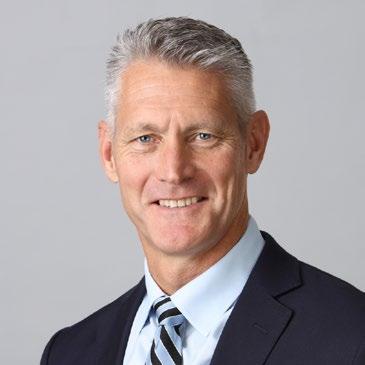
What are the challenges of water scarcity in your region?
Water risk is spread unevenly across the globe – Aquanomics estimated that, out of the ten countries surveyed, water-related GDP losses between 2022 and 2050 will hit the Philippines, Australia and the US Water scarcity related natural disasters – droughts – are expected to contribute to 15% of GDP and sector losses attributed to water risk. Droughts are of particularly high risk to food security. Agriculture accounts for approximately 70% of global freshwater withdrawals and our model estimates the sector could lose $332bn in economic output between 2022 and 2050.
In addition, water scarcity directly affects the productivity of some energy systems – our model projects total output losses of $237bn to the Energy and Utilities sector. Increasing water related risk must, therefore, be considered as part of efforts to de-risk the energy transition.
What are some of the most prevalent water-related hazards and how do they impact communities in your region?
Floods, droughts and storms are the most prevalent waterrelated hazards that are increasingly impacting communities around the world. Produced by GHD in partnership with Cambridge Econometrics and with independent input from Dr Grobicki, Aquanomics quantifies the economics of water risk and resilience across seven countries (Philippines, Canada, United States, United Kingdom, United Arab Emirates, Australia and China) focusing on five key sectors of the economy (agriculture, manufacturing & distribution, FMCG & retail, banking & insurance and energy & utilities). The findings reveal that droughts, floods and storms could result in a total loss of almost USD5.6 trillion from GDP through to 2050 and just over USD1.3 trillion by 2030. https://aquanomics.ghd.com/
We must move away from viewing water as a commodity to be controlled, instead recognising its intrinsic value as a natural, balanced cycle. To better manage water resources, and mitigate the effects of climate change, the water sector must take a long-term strategic view of resource management, focusing on three key principles:
Adapt – build resilience into new projects through adaptive pathways planning, maximizing options to respond to the uncertainties in timing and scale of change predicted
Optimise – improve resilience and performance of existing infrastructure with advanced technologies and data driven insights to extend the life, repurpose or optimise the performance of existing assets
Prioritise - put regenerative and nature-based solutions first. A circular economy approach to water management is crucial.

How can the management of water resources mitigate the effects of climate change?
Climate change will presumably disrupt our traditional water sources by affecting quality or volume, which will drive the consideration of non-traditional sources like brackish water or reuse. Minimizing the use of water within an industrial facility through effective resource management will reduce their exposure to water-related risk and lower the cost of responding appropriately in real time.
What springs to mind when you hear the words ‘water solutions’?
To me, the term “water solutions” is very broad and vague. The word ‘solution’ implies a problem, challenge, or at least a need. However, many water users are content with the status quo as long as things are operating as expected. Our industry must be proactive to ensure resilience and sustainability in a changing water landscape. We can influence that by educating each other on the growing water risks we’re facing, while being more descriptive of the solutions available to mitigate these risks and lower costs of operation.
By 2050, it is estimated 5 billion people will suffer from water scarcity by 2050… In your opinion, how can we ensure that this doesn’t happen/or try to reduce this number?
Water scarcity is a local condition that happens when demand and consumption outpace the naturally available resources. Strategies should center around reducing consumption and reinforcing available resources in a region. We should think more circularly and beyond water alone. Water goes into producing the food we consume, the clothes we wear, the energy we use. Most freshwater withdrawals are used for agriculture, while it is estimated that 30-40% of the United States food supply is wasted. Limiting our consumption, in general, is a critical component in mitigating water scarcity.
What are the innovative water solutions that can help build resilience and adaptation in the face of climate change?
Minimizing water usage also minimizes exposure to water risk, and water users are setting reduction goals accordingly. Initial goals are often met by optimizing existing systems, but water reuse will be essential to achieving more aggressive reduction goals. Water reuse is a broad category, but innovative technologies and treatment strategies will offer flexibility for existing facilities and empower greater adoption. In turn, greater adoption will stimulate innovation, and water reuse is likely to be a common practice in the future.
Across the world, and especially in arid regions, water scarcity is forcing significant investments in the development of new water management. Cities are looking at synergies between smart energy, smart infrastructure, and smart water. Compliance to regulations have created higher standards for drinking water quality. To answer these demands, ABB is adding mobile communications to AquaMaster4.
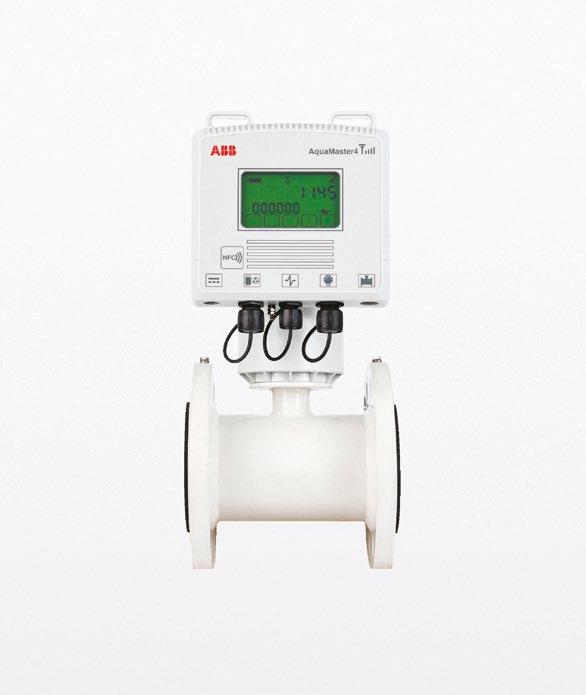
With AquaMaster4 Mobile Comms, gain total flexibility (measure, log and communicate) in a single box for district metered areas, achieve more with less capital expenditure, increase billing confidence, and experience how support has been redefined through digital services, all with the industry’s most accurate flowmeter with long-term stability. abb.com/measurement


Website URL: www.oxyle.ch

Product Name: Catalytic Micropollutant Elimination
Product Details:
We’ve pioneered a unique technology for complete, real-time micropollutant removal using energy-activated catalysts. Our approach ensures pollutant elimination, not just transfer. We offer scalable, cost-effective solutions adaptable to diverse applications. With decentralised reactors and automated processes, our technology suits various industries, providing efficient, lowmaintenance solutions for global water contamination.
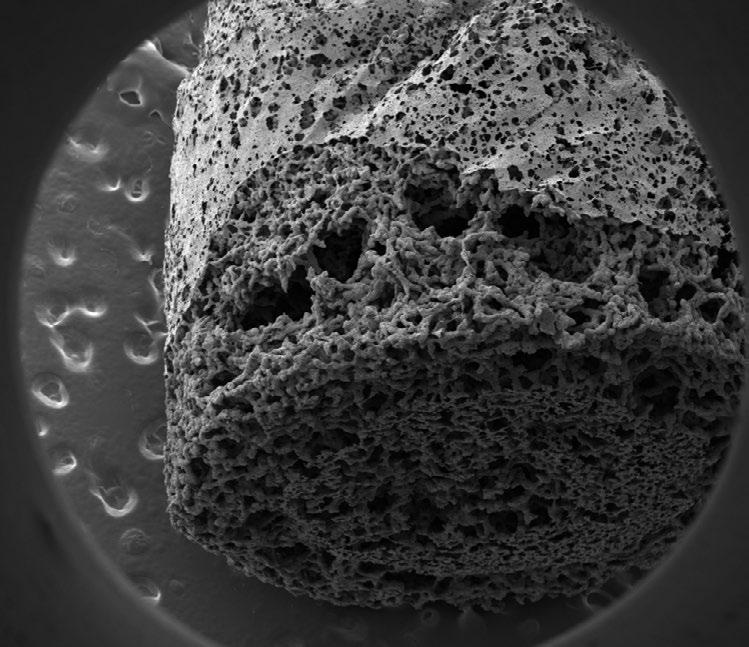
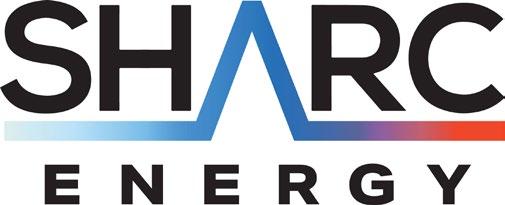
Website URL: www.sharcenergy.com
Product Name: SHARC Waste Water Energy Exchange
Product Details:
The SHARC systems allow building to dissipate the waste heat from their air conditioning systems into the sewer lines instead of into the air with cooling towers. By using a SHARC system there are tremendous fresh water savings as well as energy and chemical treatments savings.

Website URL: www.transcendinfra.com
Product Name: Transcend Design Generator
Product Details:
The Transcend Design Generator (TDG) is an intuitive, online generative design platform that enables capital planners, project developers, and engineers to rapidly generate preliminary designs for critical infrastructure, including water, wastewater, and power. It automates engineering and documentation workflows to deliver high quality, detailed, budgetary proposals and other project materials.
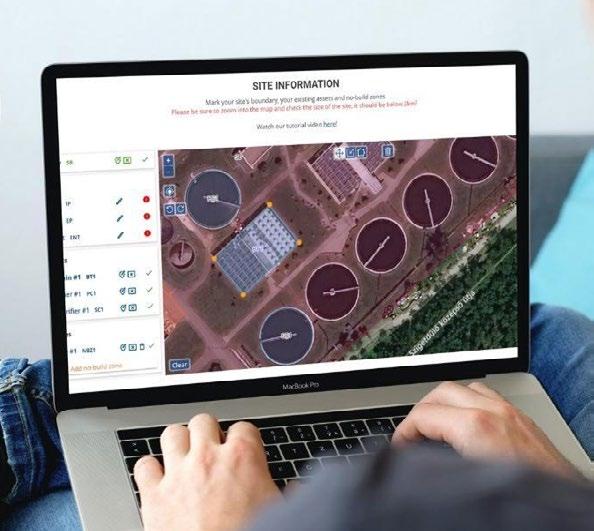
Website URL: 374water.com
Product Name: AirSCWO
Product Details:
374Water’s AirSCWO™ is a disruptive technology that transforms waste such as sewage sludge, food waste, hazardous and non-hazardous waste, and forever chemicals (PFAS) into valuable recoverable resources: water, energy, and minerals. 374Water’s Supercritical Water Oxidation solution supports a circular economy and enable organizations to achieve their ESG and sustainability goals.
Website URL: www.zwitterco.com

Product Name: Zwitterionic Superfiltration Membranes

Product Details:
ZwitterCo’s patented, zwitterionic superfiltration membranes handle unprecedented levels of oil and grease without irreversible fouling, recovering full performance. The membranes enable water reuse for tough industrial wastewaters that have high concentrations of organic materials. They can be cleaned without harsh chemicals, resulting in lower OPEX, fewer replacements, and less downtime.



Website URL: onekawater.com
Product Name: Oneka Icecube
Product Details:
Oneka’s Icecube is a desalination unit that uses wave energy exclusively to turn seawater into freshwater. This compact solution is designed for emergency and disaster relief applications. Each unit, which is easily deployable, can produce up to 1000 L of water per day.
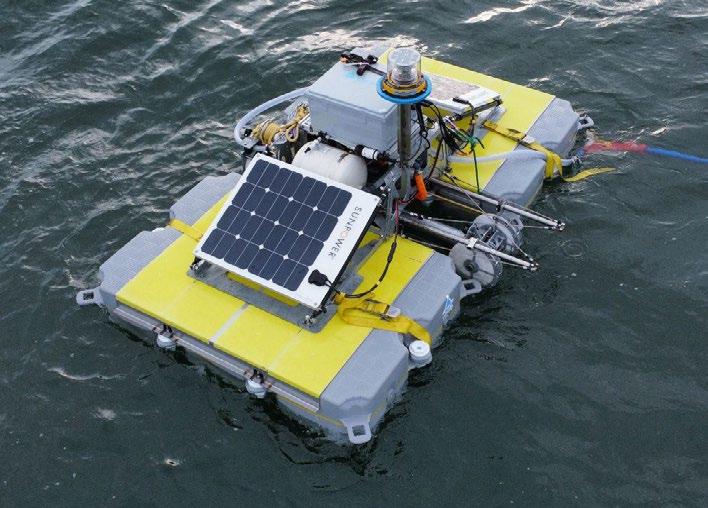
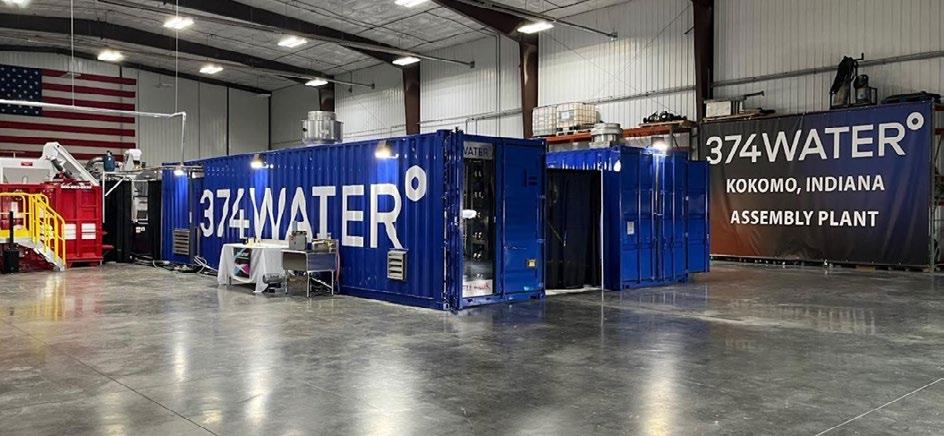
Website URL: www.iosight.com
Product Name: iGreen
Product Details:
IOSight offers an end-to-end data management and analytics solution from Data Foundation, through Business Intelligence outputs to Advanced Analytics and decision support algorithms.

Website URL www.flumewater.com

Product Name: Flume Smart Home Monitor
Product Details:
The Flume Water Monitor straps around residential water meters, capturing precise water use data at 5-second intervals without interfering with meter performance. The Flume device goes beyond simple consumption readings, offering homeowners 24/7 instant leak detection, detailed breakdowns of indoor vs. outdoor usage and insights into specific water appliances.

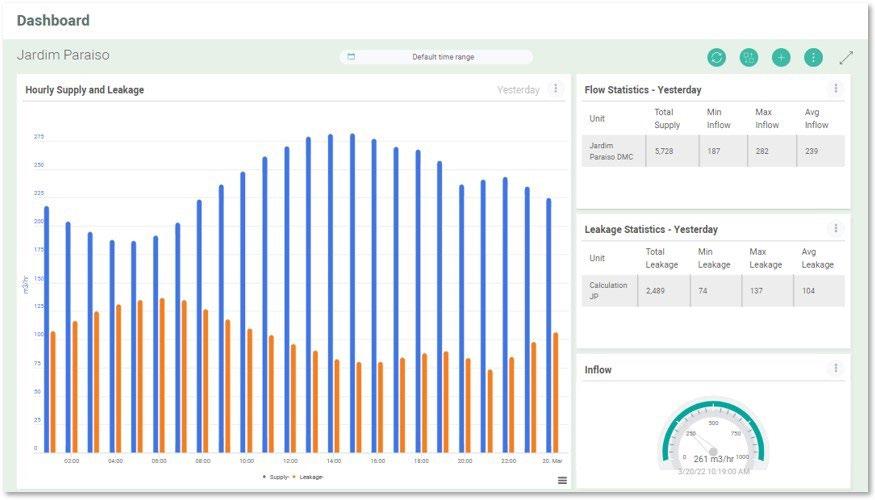
Website URL: ethz.ch

Product Name: Harvesting drinking water from humidity
Product Details:
Our system continuously harvests atmospheric water vapor without any energy required, i.e. completely passive. The system combines radiative cooling and a passive (superhydrophobic) condenser, where droplets self-remove, i.e. jump off. The system allowed us to continuously harvest atmospheric water at rates close to the ultimate capabilities of such systems.

Date: 25th - 26th October
Location: Los Angeles, USA
World Water Tech North America is a two-day event for US water utilities, engineering firms, technology pioneers, regulators and investors.
Date: 10th - 13th October
Location: Lyon, France
Pollutec is a four-day event for environmental professionals. Born in 1978, Pollutec is recognized today as one of the main meeting place for environmental professionals. It is also a platform for environmental solutions for industries, cities and territories, and a springboard for innovations and international developments
Date: 6th November
Location: Amsterdam, Netherlands
The Aquatech International Forum is a one-day interactive conference. Based on the principle of Roman city ‘Forums’, which were the centre for social, economical and political activities, the Innovation Forum was designed to disrupt the conventional conference model.
Date: 8th November
Location: Birmingham, UK
WWT’s Water Industry Asset Management Conference is a one-day event, returning for the 12th year and bringing together over 120 decision makers from the UK’s water companies and their suppliers to share best practice in asset management.
Date: 14th - 16th November
Location: Bilbo, Spain
The IWA Digital Water Summit is a three-day event designed to be the reference in digitalisation for the global water sector.
Date: 21st November
Location: Manchester, UK
British Water’s first annual conference is a one-day event that will look at how to best build an effective and resilient ecosystem of key stakeholders including regulators, water companies, consultants, contractors, manufacturers, suppliers and academia to deliver for now and the future.




